Ann Arbor, Michigan
SERVED JUSTICE IS
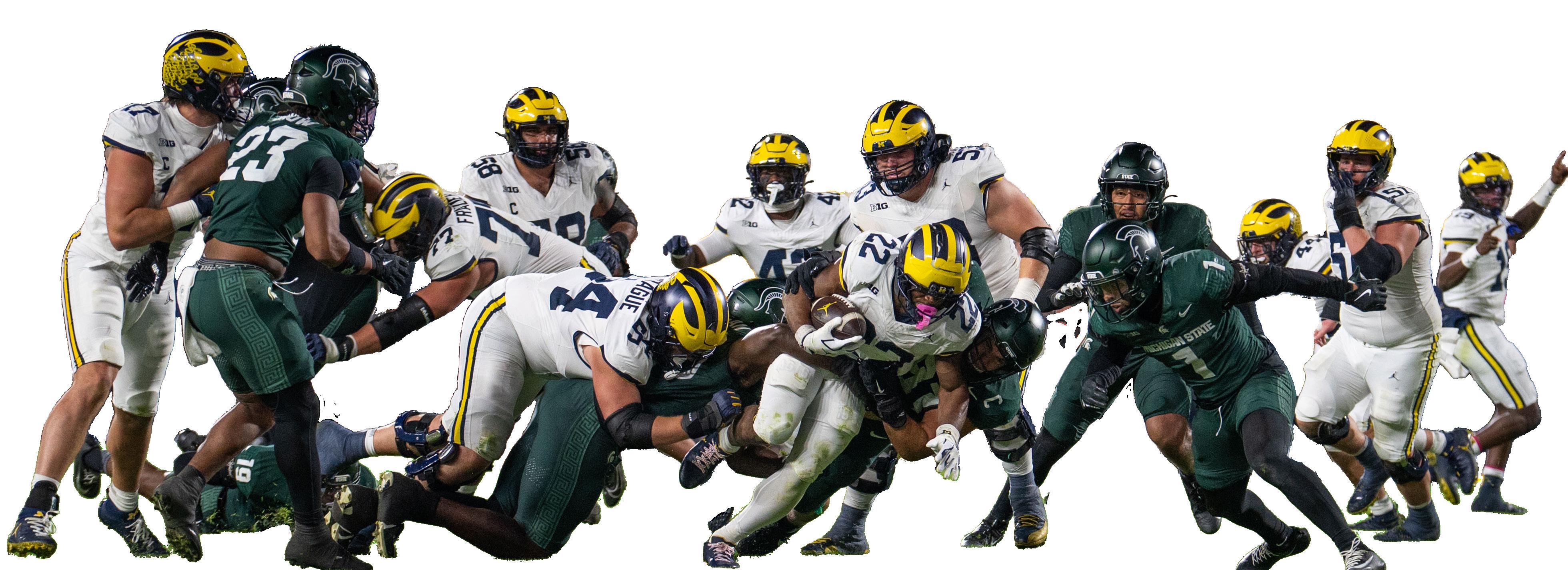
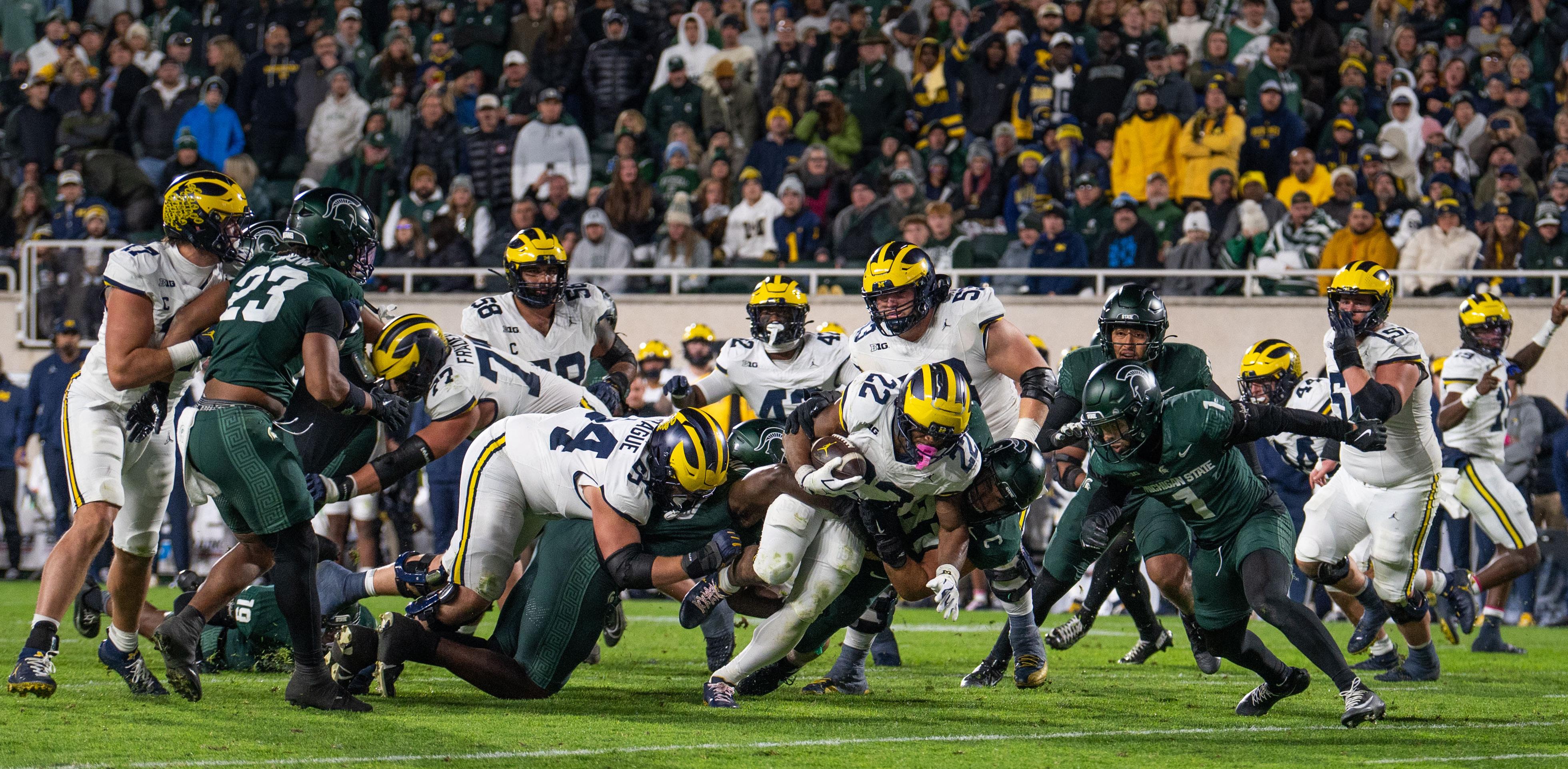
ZACH EDWARDS Managing Sports Editor
EAST LANSING — In the battle for the Paul Bunyan Trophy and the ‘State Championship’, one player helped settle the dust to decide the winner of the in-state rivalry.
Although the No. 25 Michigan football team wasn’t convincing in the first half Saturday against Michigan State, they turned things around in the second half and leaned on the player they have all season — junior running back Justice Haynes. After he sat out with injury against Washington, Haynes reminded everyone why he’s considered one of the top backs in the country.
“I was very eager to get out there,” Haynes said. “It always sucks being hurt, but I can only control the controllables.”
Haynes, who finished with 152 yards and two touchdowns, led Michigan (6-2 overall, 4-1 Big Ten) to a 31-20 rout of the Spartans (3-5, 0-5). When it mattered most, Haynes stepped up to extend the lead and ultimately extend the Wolverines’ win streak to four in the rivalry.
Despite having a 10-7 lead at halftime, Michigan played a sloppy first half. But Michigan State was even messier with an early turnover and frequent penalties setting it behind.
The Wolverines forced a fumble on the first drive of the game.
While Michigan’s offense couldn’t capitalize with a touchdown, they went on the board early with a 21-yard field goal. Offensively, Michigan was almost entirely stagnant. Haynes’ 14-yard screen-pass catch on a crucial third down to set up a 13-yard
rushing touchdown for freshman quarterback Bryce Underwood later in the first quarter. But other than that, both the run and pass game for the Wolverines left much to be desired.
Michigan State struggled in a similar capacity, committing 75 yards worth of first-half penalties that gave Michigan breaks it needed. But the Spartans responded to Michigan’s first 10 points with a 73-yard touchdown drive of their own. Running back Makhi Frazier broke multiple tackles on a 49-yard run and a crucial pass interference call in the end zone on second-and-goal from the 17-yard line to set up a 10-7 score at the break.
These first-half woes from both sides gave either of the in-state rivals a path to victory. That’s when Haynes took over.
second half with two runs of more than 20 yards, totaling 48 yards, which was 2 yards less than his entire first-half production. Then the Spartans proved even more penalty ridden by having a strip sack taken away due to an offsides call, leading to a subsequent thirddown conversion for Haynes.
All Haynes needed was two more 5-yard runs to put up a touchdown on the first drive of the second half, marking the beginning of the end for Michigan State.
“We went down and scored that first drive, and that gave us a lot of momentum,” Moore said.
“There were some plays that we thought would hit, and they did. And when they hit a first play for 20 something yards, you want to get back to it and keep going. So we just took the momentum and just wanted to keep it rolling.”
the momentum rolling by adding to the lead just two drives later.
After freshman wide receiver Andrew Marsh hauled in his second reception of over 20 yards on the night, Haynes punched in a 14-yard touchdown to extend the lead. Haynes had multiple gritty, 5-to-10 yard runs in the second half to keep drives alive and spearhead the offense.
“He’s an explosive player, one of the best running backs in the country in our eyes, and it was awesome to have him back,” Moore said. “He ran so hard. He ran physical … and he just continues to play at a high level. It was huge to have him back. But, you know, having Jordan as your two-back go for 15 carries for 110 yards and a touchdown is pretty good too.”
Michigan State recorded 38 total yards on every other drive through the first three quarters. The Spartans didn’t lose life, though, scoring a touchdown on the sixth play of the fourth quarter. But two consecutive turnover on downs ended any chance for Michigan State. And sophomore running back Jordan Marshall capitalized the victory with a 56-yard touchdown run to put the finishing touches on the victory.
The Wolverines’s defense shut down Michigan State for all but two drives and a garbage-time touchdown. On the back of its bell cow, who displayed a strong welcome-back performance from, Haynes and Michigan kept the Paul Bunyan Trophy in Ann Arbor for the fourth consecutive year.
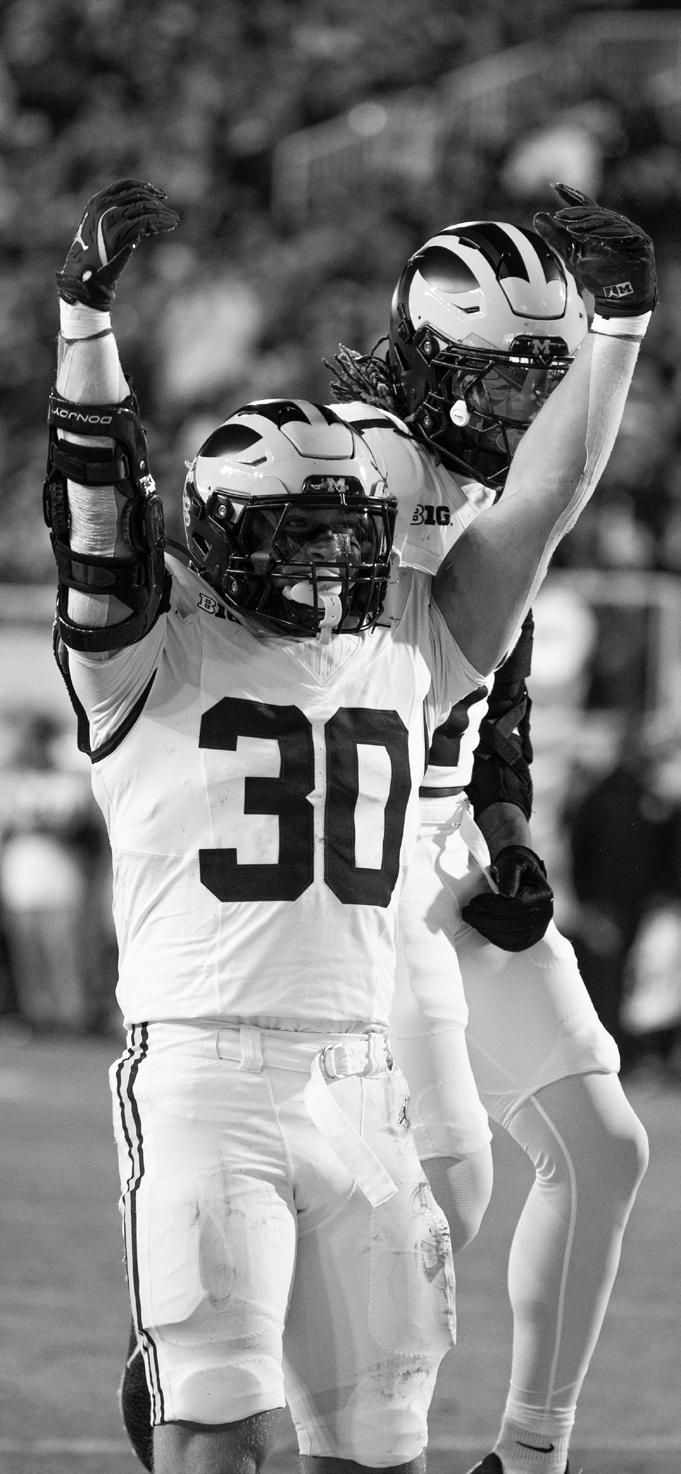




Aside from its 73-yard touchdown drive in the first half,
And Haynes kept
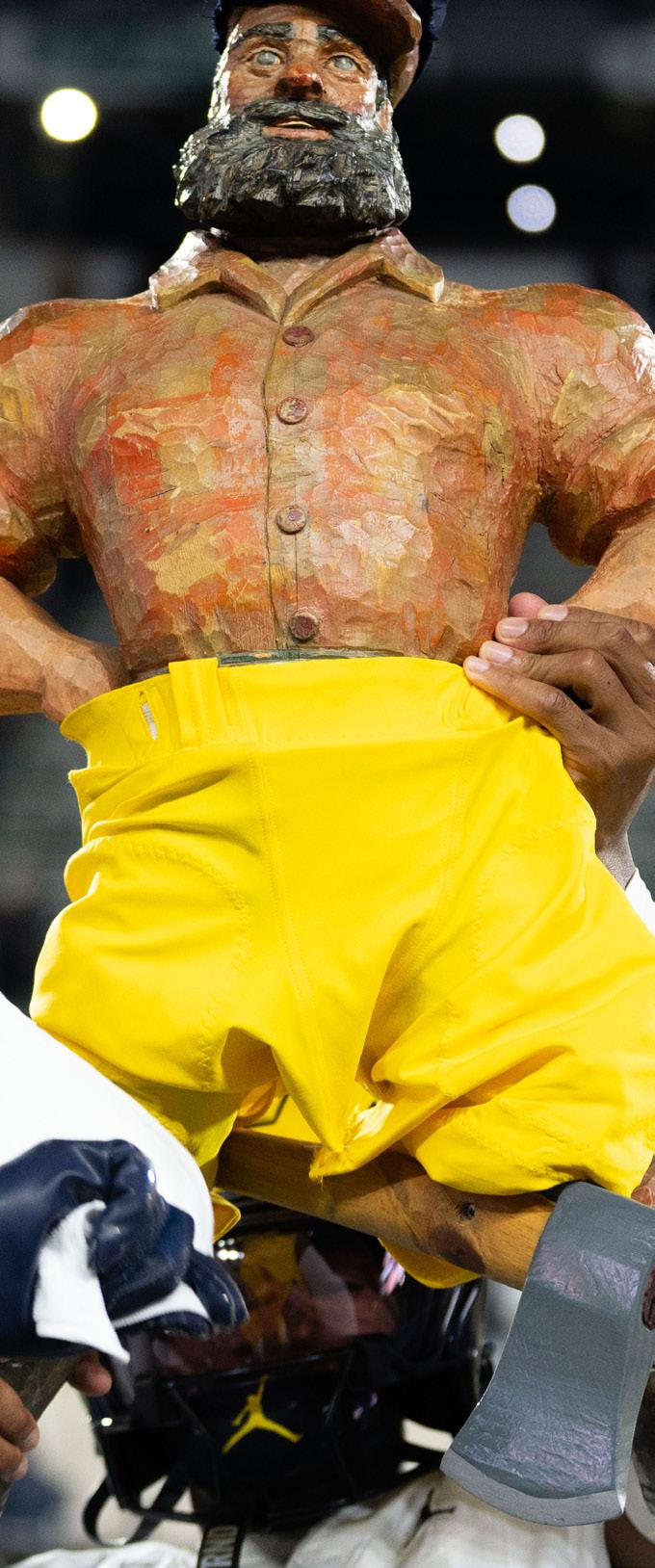



Former U.S. national security advisor gives lecture on US role in global conflicts
25th U.S. National Security Agency advisor H.R. McMaster speaks at annual Arthur Vandenberg Lecture
GIA VERMA & SARAH PALUSHI Daily Staff Reporters
More than 125 people gathered Thursday afternoon in the Walter and Leonore Annenberg Auditorium for the seventh annual Arthur Vandenberg Lecture. Established in 2017 to honor former Michigan Sen. Arthur Vandenberg, this year’s lecture featured Javed Ali, associate professor of practice at the Ford School of Public Policy, and H.R. McMaster, who served as the 25th
U.S. National Security Agency advisor in President Donald Trump’s first administration. Ali and McMaster discussed the role of the United States in global conflict and prospects of peace.
McMaster began the talk by acknowledging the role of strategic competence in fighting against foreign agencies. McMaster said he believes there is a rise in an “axis of aggressors” consisting of China, Russia, North Korea and Iran.
“We’re facing a very dangerous world in which we have seen a coalescence of what I would call
an axis of aggressors,” McMaster said. “What (the countries) share is a desire to tear down the existing rules of international discourse, whether economic or security or heightened financial rights, and replace them with a new set of rules that are sympathetic to their authoritarian forms of government.”
McMaster continued, saying he worries the current political climate has led to a loss of confidence in the government’s ability to provide for U.S. citizens.
“I think that’s why you see an impulse these days toward just
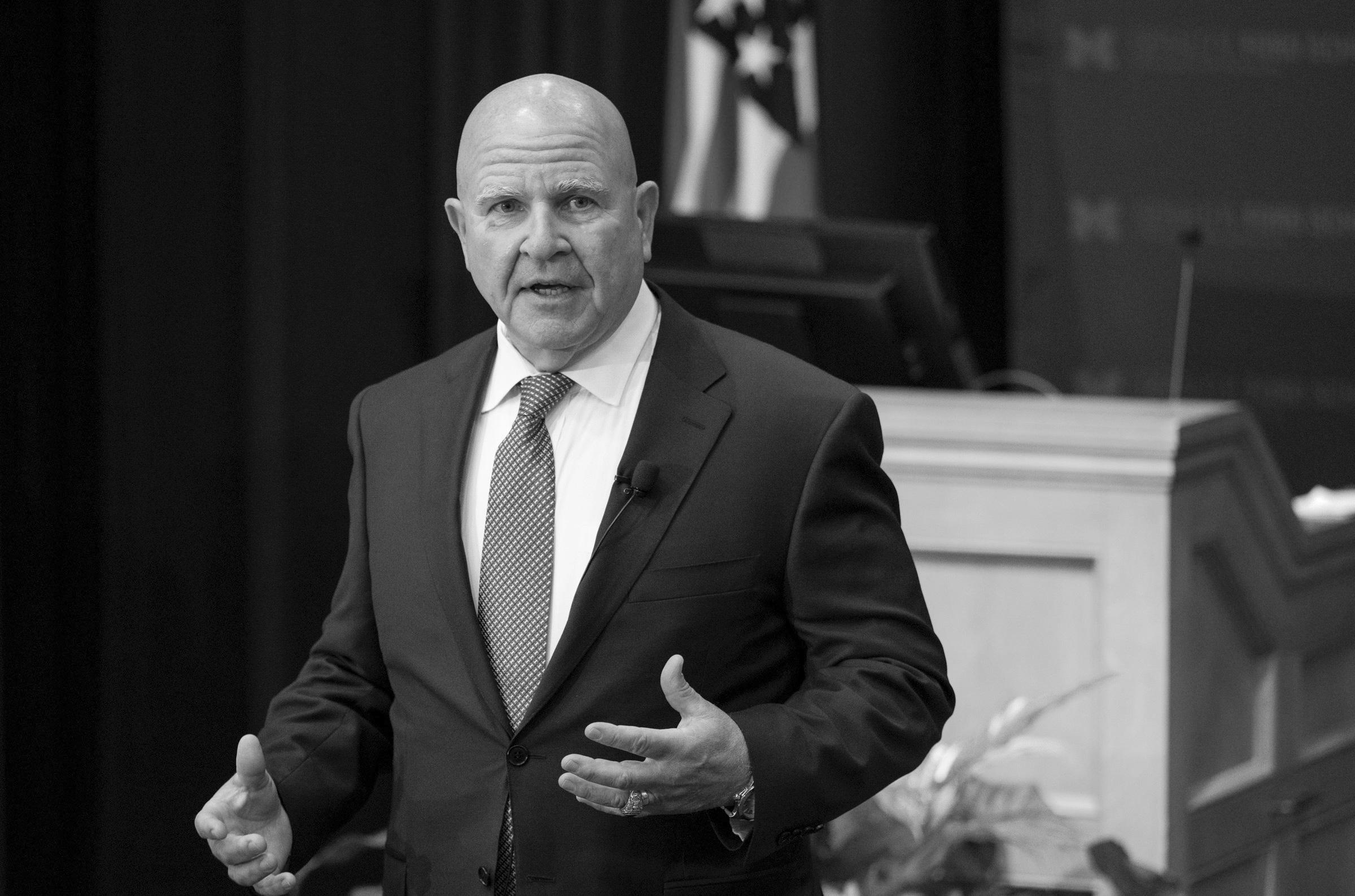
retrenchment, disengagement and a loss of competence,” McMaster said. “I think it has brought about a loss of confidence, confidence in our ability to achieve favorable outcomes for our own citizens, for citizens of the free world by sustained diplomatic, military and other economic engagement in the world.”
Next, McMaster said strategic empathy — the ability to view these complex challenges from the opposing perspective — is driven by a fear of losing control. McMaster said this is especially prevalent in the Chinese Communist Party.
“What’s driving that party, primarily, is fear — the party’s fear of losing control,” McMaster said. “The Chinese Communist Party leadership tries to appear strong. I believe this is some real insecurity, because they fear their own people more than they fear anything.”
McMaster said he believes China is preparing for nuclear war with the United States, in particular through its ties to Russia.
“I also believe (China is) preparing a first strike with nuclear capability, which they would use to keep us at bay while they do whatever they want in the Indo, Pacific and beyond,” McMaster said. “Part of China’s approach is this relationship with Russia. I think you could argue that China’s fighting a proxy war against Europe and the United States by using the Russians at this stage.”
U-M hits record fall enrollment of more than 53,000 students
CONTINUED AT MICHIGANDAILY.COM
Sets new records with 115,957 total applicants and 3% undergraduate enrollment increase from 2024. ACADEMICS
GRACE PARK Daily Staff Reporter
This fall, the University of Michigan-Ann Arbor set new records with 115,957 total applicants and a fall enrollment of 53,488 students, a 1% total increase and 3% undergraduate increase from 2024. Enrollment has increased each year since 2021.
Of the 9,711 newly enrolled undergraduate students, 8,178 were freshmen and 1,533 were transfer students. The freshman class includes students from all 50 states, Washington, D.C, five U.S. territories and 62 countries.
In an interview with The Michigan Daily, LSA and Education senior Eric Veal Jr., Central Student government president, said that due to the surge of freshmen, Central Student Government has launched new initiatives, including a First-Year Council, to connect with first-year students, including traditional freshmen, transfer students and first-year graduate students.
“It’s an initiative where we’ll be hearing from firstyears directly, being with them regularly, to hear about the issues that they’re facing as a first-year student,” Veal said.
“The whole premise of it is to bring in the perspective of first years because they’re the ones who will be dealing with this enrollment increase.”
Veal said CSG is striving to better support student organizations through their new Bridge Program, which hopes to develop relationships between CSG and representatives from student organizations.
“The bridge program focuses on having a student (representative) from each org directly connect with the student government every time there’s a pressure point of something going on on campus,” Veal said. “Every time they have routine meetings to talk about what’s going on in their orgs and how student government can support them.”
The University’s residence
halls have also been impacted by record enrollment. In an email to the Daily, LSA junior Breanna Rawlins, Residence Halls Association vice president of outreach initiatives, wrote she has noticed increased strain on the dining halls.
“I live and eat in the same places as last year, and the comparison makes it very visible,” Rawlins wrote. “We are more frequently out of food, out of silverware, or just out of places to sit! I also notice this a lot in the shared restrooms in the dorm, the added population didn’t come with added staff, or added pay, so things are not being cleaned or restocked quickly enough to keep up with the usage.”
In an email to The Daily, LSA Sophomore Jaidyn Opuni, RHA vice president of internal relations, wrote that in addition to the dining halls, she has experienced other shortages throughout the residence halls.
“As for general facilities, East Quad ran out of paper products for at least a week or so — I
would have to travel across East Quad to find a bathroom with toilet paper, just for there to be no paper towels,” Opuni wrote. Some general facilities, like residence hall lounges, have turned into student accommodations. Opuni wrote how the decline in the number of common areas has made it more difficult to foster a community among the residents.
“Some students are living in rooms that were once lounges in the Residence Halls, which has made it harder for us to advocate for residents’ needs,” Opuni wrote. “In addition to lacking typical room amenities, the absence of lounges leave residents with fewer public, community-building spaces.”
According to Mike Stowe, LSA Newnan academic advisor and coordinator for student communication and engagement, the LSA Newnan Academic Advising Center has not experienced many impacts from the record enrollment.
CONTINUED AT MICHIGANDAILY.COM
UMich study finds increase in flavored marijuana vape use among teenagers
General marijuana use decreased among the sampled population but flavored marijuana vape usage increased from 2% to 4%
University of Michigan researchers at Monitoring the Future found in a 2025 study that flavored marijuana vape use among teenagers is on the rise. In its 2024 results, marking the 50th year of data collection, the study found that although general marijuana use decreased among the sampled population, flavored marijuana vape usage increased from 2% to 4%.
Monitoring the Future collects an annual nationally representative sample of eighth, 10th and 12th graders to inform policymakers, stakeholders and the general
public about the shifting landscape and trend of drug use among adolescents. The study, funded by the National Institute on Drug Abuse, is conducted through the University’s Institute for Social Research.
In an interview with The Michigan Daily, Richard Miech, principal investigator and research professor, said that although the general surveyed group showed a decrease in marijuana use, those who do use marijuana are shifting toward flavored marijuana vapes.
“Among those who use marijuana, the vaping flavors become really popular,” Miech said. “There’s a subgroup of people who are using flavored vaping marijuana solutions, and
that is increasing so fast that it’s going against the trends. … So even though marijuana use is going down among those who use marijuana, there has been this substantial increase in the use of flavors.”
The study found that the percentage of adolescents who used flavoring when vaping marijuana switched from a minority to a majority of respondents within the subgroup. For example, among 12th graders who vape marijuana, 36% reported that they used flavored vapes in 2021, which increased to 50% in 2024.
Kendall Williams, Bloom City Club dispensary worker, said artificial flavoring has not been more popular at Bloom with
Stanford Lipsey Student Publications Building 420 Maynard St. Ann Arbor, MI 48109-1327 734-418-4115 www.michigandaily.com
ZHANE YAMIN and MARY COREY Co-Editors in Chief eic@michigandaily.com
ELLA THOMPSON Business Manager business@michigandaily.com
NEWS TIPS tipline@michigandaily.com
LETTERS TO THE EDITOR tothedaily@michigandaily.com
EDITORIAL PAGE opinion@michigandaily.com
PHOTOGRAPHY SECTION photo@michigandaily.com
NEWSROOM news@michigandaily.com CORRECTIONS corrections@michigandaily.com
ARTS SECTION arts@michigandaily.com SPORTS SECTION sports@michigandaily.com
ADVERTISING wmg-contact@umich.edu
Editorial Staff
CECILIA LEDEZMA Joshua Mitnick ’92, ’95 Managing Editor cledezma@umich.edu
FIONA LACROIX Digital Managing Editor flacroix@umich.edu
customers aged 21 years and older, but rather the addition of substances that enhance the natural flavoring of cannabis.
“Not flavoring, but live resin is really popular,” Williams said. “They add cannabis terpenes to vapes (for flavoring).”
Terpene flavorings differ from artificial flavoring in that they are organic and mimic natural cannabis flavors. They are known to add to the potentially therapeutic effects of cannabis. In contrast, artificial flavoring has been shown to induce inflammation, oxidative stress and DNA damage independent of nicotine.
CONTINUED AT MICHIGANDAILY.COM
JONATHAN WUCHTER and ZACH EDWARDS Managing Sports Editors sports@michigandaily.com
Senior Sports Editors: Annabelle Ye, Alina Levine, Niyatee Jain, Jordan Klein, Graham Barker, Sam Gibson
CAMILLE NAGY and OLIVIA TARLING Managing Arts Editors arts@michigandaily.com
LEYLA DUMKE and ABIGAIL SCHAD Managing Design Editors design@michigandaily.com
Senior Layout Editors: Junho Lee, Maisie Derlega, Annabelle Ye Senior Illustrators: Lara Ringey, Caroline Xi, Matthew Prock, Selena Zou
GEORGIA MCKAY and HOLLY BURKHART
Managing Photo Editors photo@michigandaily.com
Senior Photo Editors: Emily Alberts, Alyssa Mulligan, Grace Lahti, Josh Sinha, Meleck Eldahshoury
Deputy Editors: Graciela Batlle Cestero, Irena Tutunari, Aya Fayad ALENA MIKLOSOVIC and BRENDAN DOWNEY Managing Copy Editors copydesk@michigandaily.com
Senior Copy Editors: Josue Mata, Tomilade Akinyelu, Tim Kulawiak, Jane Kim, Ellie Crespo, Lily Cutler, Cristina Frangulian, Elizabeth Harrington
DARRIN ZHOU and EMILY CHEN Managing Online Editors webteam@michigandaily.com
Data Editors: Daniel Johnson, Priya Shah Engineering Manager: Tianxin “Jessica” Li, Julia Mei Product Managers: Sanvika Inturi, Ruhee Jain Senior Software Engineer: Kristen Su
AHTZIRI PASILLAS-RIQUELME and MAXIMILIAN THOMPSON Managing Video Editors video@michigandaily.com
Senior Video Editors: Kimberly Dennis, Andrew Herman, Michael Park
Senior MiC Editors: Isabelle Fernandes, Aya Sharabi, Maya Kogulan, Nghi Nguyen
AVA CHATLOSH and MEGAN GYDESEN Managing Podcast Editors podeditors@michigandaily.com
Senior Podcast Editor: Quinn Murphy, Matt Popp, Sasha Kalvert
MILES ANDERSON and DANIEL BERNSTEIN Managing Audience Engagement Editors socialmedia@michigandaily.com
Senior Arts Editors: Nickolas Holcomb, Ben Luu, Sarah Patterson, Campbell Johns, Cora Rolfes, Morgan Sieradski Senior Audience Engagement Editors: Dayoung Kim, Lauren Kupelian, Kaelyn Sourya, Daniel Lee, Quinn Murphy, Madison Hammond, Sophia Barczak, Lucy Miller, Isbely Par SARA WONG and AYA SHARABI Michigan in Color Managing Editors michiganincolor@michigandaily.com
SAYSHA MAHADEVAN and EMMA SULAIMAN Culture, Training, and Inclusion Co-Chairs accessandinclusion@michigandaily.com
ANNA MCLEAN and DANIEL JOHNSON Managing Focal Point Editors lehrbaum@umich.edu, reval@umich.edu Senior Focal Point Editors: Elizabeth Foley and Sasha Kalvert
TALIA BLACK and HAILEY MCCONNAUGHY Managing Games Editors crosswords@umich.edu Senior Games Editors: James Knake, Alisha Gandhi, Milan Thurman, Alex Warren
Business Staff
OLIVIA VALERY Marketing Manager
DRU HANEY Sales Manager
GABRIEL PAREDES Creative Director JOHN ROGAN Strategy Manager
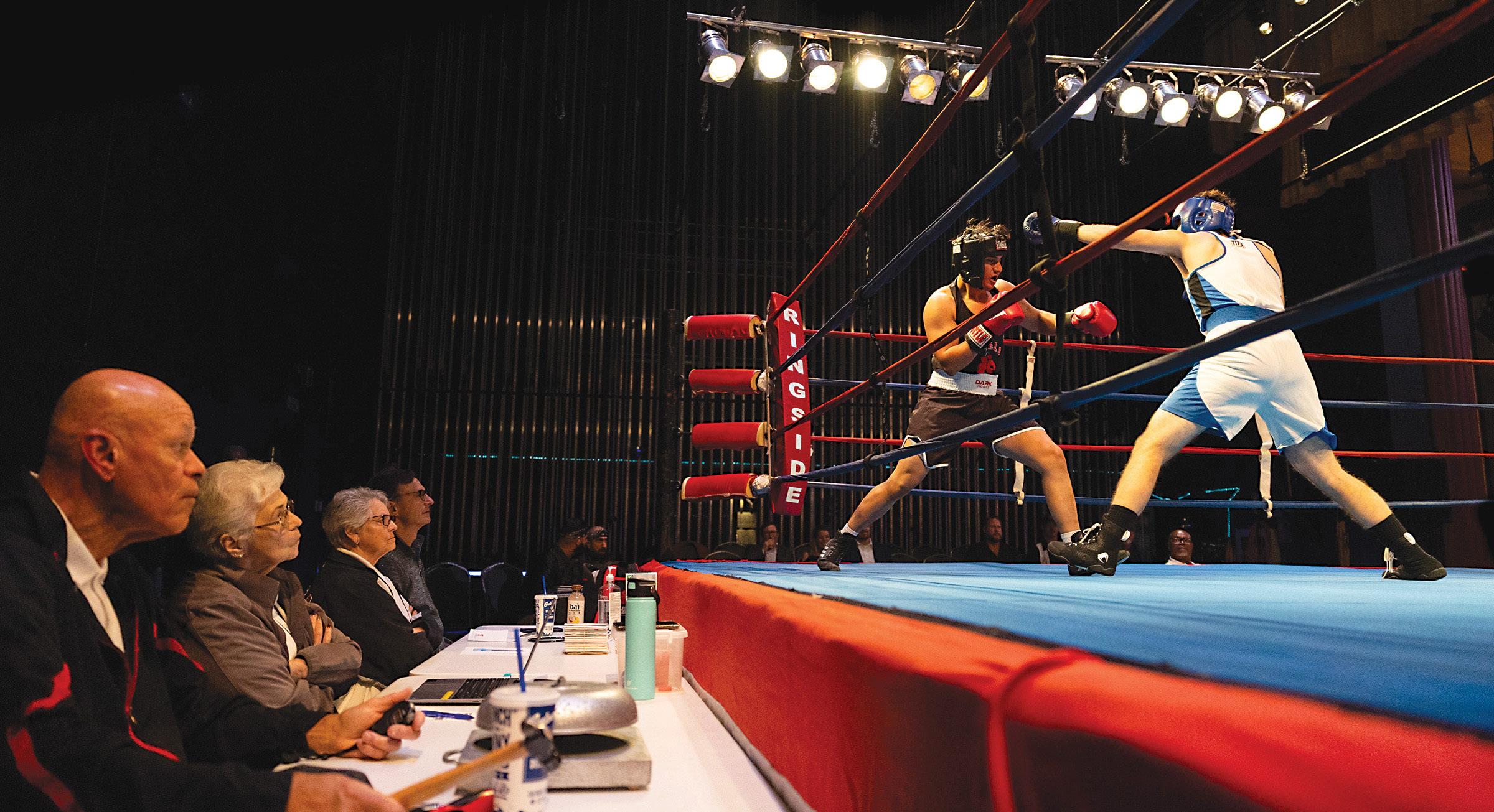
UMich hosts Nobel laureate Malala Yousafzai
Speaks on her experience in college, mental health and advocacy
More than 600 students, faculty and community members packed into the Rogel Ballroom of the Michigan Union Friday evening to hear Nobel laureate Malala Yousafzai speak. At the sold-out event, sponsored by the Weiser Diplomacy Center and Ford School of Public Policy, Yousafzai discussed her new memoir “Finding My Way” and her thoughts on college, mental health and advocacy.
Yousafzai documented the Taliban’s ban on girls’ education and survived a nearly fatal attack at 15 after being shot on her way to school. Two years later, she became the world’s youngest Nobel Peace Prize winner at 17. Yousafzai, joined in conversation by Susan Page, director of the Weiser Diplomacy Center, and Madhumita Lahiri, associate professor of English language
and literature, reflected on finding normalcy in college and adulthood while balancing responsibilities of being a worldrenowned activist. Lahiri asked Yousafzai to read a passage from her new book “Finding My Way,” which commemorates her graduation from Oxford University in 2020. Yousafzai read the story to the audience and then shared how her graduation from Oxford was one of the transformative moments of her life.
“College will really help you explore who you are as a person,”
Yousafzai said. “It’s through the friends you meet, it’s the experiences that you have. At the same time, I felt like I was living my childhood dream. This is something that I had only dreamed of, to be learning and to complete my studies. I vividly remember the times when the Taliban had stopped us from going to school. The moment when I graduated, it felt like we had won.”
Page then asked Yousafzai why she focused on the small moments of everyday life in her new memoir, rather than sharing more of the extraordinary moments she has lived through.
“I wanted to tell my true story, and not a story that is glamorized or misleading in a way,” Yousafzai said. “I think the way we hear stories of activists is simplified, where they are shown as strong people, that they have no fear, that they have no feelings, that they do not wish for a normal life. I’m saying this because I became an activist at a young age, I received such recognition at a young age, that I actually internalized those perceptions.”
Page said while reading the memoir, she noticed that Yousafzai initially struggled with the idea of asking for support due to the stigma surrounding mental health in Pakistani culture. Yousafzai
said she only sought out therapy after a bad panic attack during her first time smoking a cannabis bong with some friends at Oxford.
“The first attempt, I coughed,” Yousafzai said. “The second attempt, it just went inside my body, and that’s when it took a sharp turn. I was reliving the Taliban attack again and again. I could not get out of it, I could not get out of the trauma that I was experiencing. My body paused, time slowed down, and it went on for hours and hours. I just couldn’t even process if I was alive or dead.”
Yousafzai said the panic attack was particularly troubling because, when she was initially shot by the Taliban, she did not feel any fear, but after using marijuana, she continued to experience intense post-traumatic stress disorder and panic attacks.
CONTINUED AT MICHIGANDAILY.COM
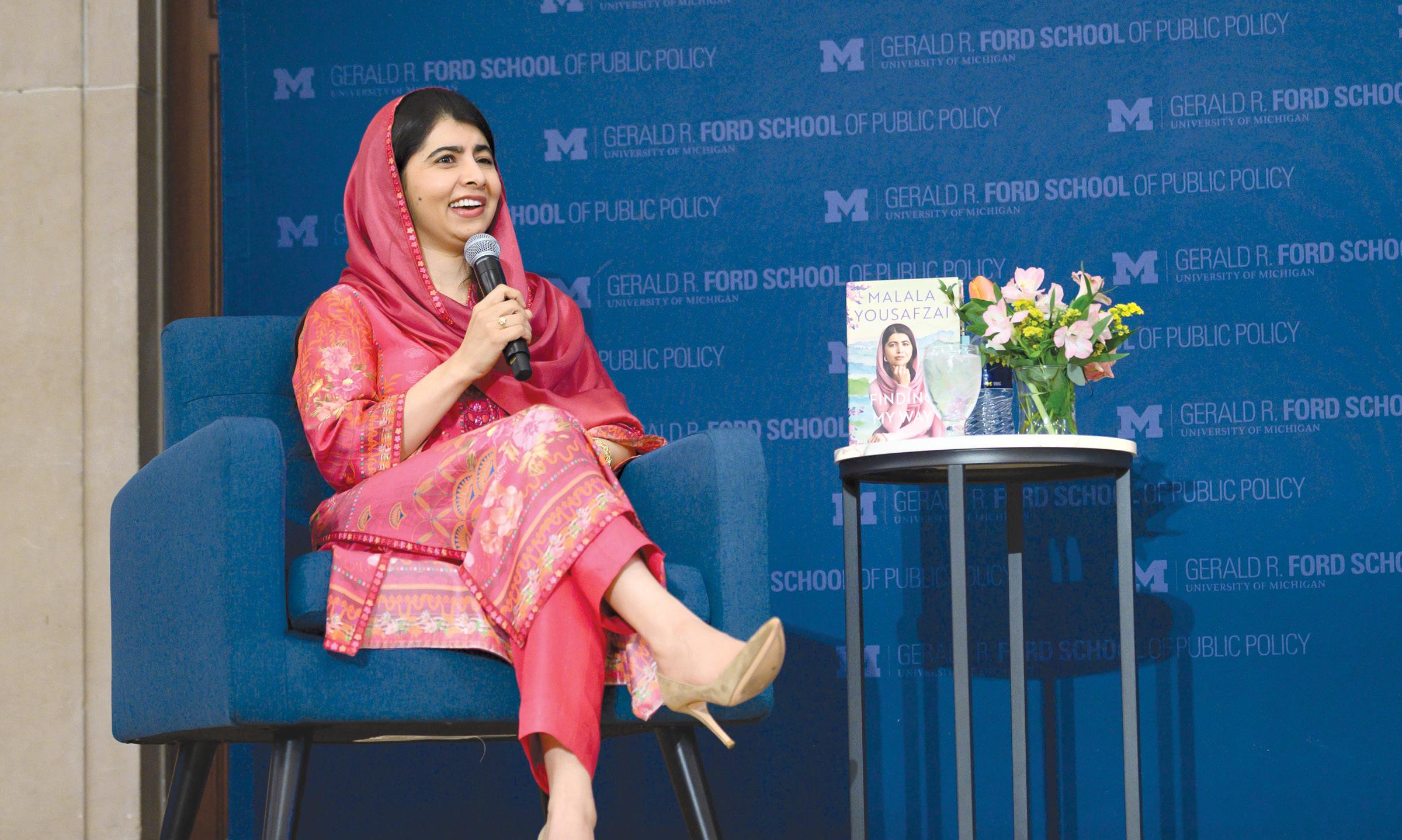
ARBOR ALYSSA TISCH Daily Staff Reporter
“Protesting
genocide is our right and moral duty, and
police are always responsible for any escalation and violence.”
Three pro-Palestine protesters were arrested Wednesday night during their participation in a demonstration organized by the TAHRIR Coalition, a coalition of more than 90 pro-Palestine student organizations, against a speech from two former members of the Israel Defense Forces hosted by the University of Michigan’s chapter of Students Supporting Israel as a part of their “Triggered: Combat on College” event. The event was part of an ongoing tour organized by SSI, which began in spring 2025 and has hosted similar events at more than 20 college campuses so far.
About 150 activists gathered outside of Rackham Graduate School to protest the event.
Activists opposed the presence of the Israeli soldiers as speakers due to the current Israeli military campaign in Gaza, which has killed more than 67,000 people and has been classified as a genocide by the United Nations.
In an interview with The Michigan Daily, LSA senior Fiona Dunlop, who participated in the protest, said the protesters chose to refer to the Israeli military as the IOF, or Israeli Occupation Forces, due to their actions in Palestine.
“A lot of people know them as the IDF, Israeli Defense Forces, but they’re not defense, they’re occupation,” Dunlop said.
“They’re occupying Palestine — creating a genocide in Palestine. So that’s why we call them the IOF.”
Activists demonstrated outside the south entrance of Rackham for several hours, carrying pictures of starving Gaza residents on posters and printed paper, a banner that read “war criminals off campus” and other articles of protest.
While activists who gathered outside the south entrance were able to disperse without police intervention, a second smaller group — who continued to protest outside the north entrances where they believed the Israeli soldiers would leave the event — were met with a heavy response from the University of Michigan Police Department
In an interview with The Daily, one activist, who requested to remain anonymous for fear of retribution, alleged that protesters faced incidents of police force at the scene. The activist will be referred to as John for the purposes of this article.
“As we were gathered there we were met with about a dozen police officers, and out of nowhere several police officers started
grabbing unarmed, non-violent protesters,” John said. “Police officers started pushing them to the ground. Several officers threatened to use pepper spray, and there were many others that were almost arrested but managed to escape the police officers.” John said the protesters had not engaged in any violent or illegal behaviors that would have justified the actions of the police.
“It was an incredibly violent situation that occurred really out of nowhere,” John said. “After the initial arrest even more police officers were dispatched for some reason, even though we were completely non-violent, and the police officers continued to threaten us.”
In an email to The Daily, Melissa Overton, deputy chief of police for the Division of Public Safety and Security, wrote that the protest escalated when demonstrators blocked a parking garage and refused police orders to move.
“A group blocked egress from an underground parking garage and refused lawful orders to move,” Overton wrote. “Three individuals, not affiliated with the University of Michigan, were arrested on charges including resisting and obstructing police, attempting to disarm an officer, disorderly conduct, and outstanding warrants. The cases are being forwarded to the prosecutor for review.”
In a statement to The Daily, the SSI executive board said the organization was disappointed with the protest in response to the event.
“This event was sacred to members of the Jewish community here on the UofM campus, whether or not it was agreed upon by everyone it deserved to be respected,” the statement read.
“It is heartbreaking that our event required as much security and police presence as it did. We as an organization support the right to free speech and protest. We do not have first hand accounts of what led to these arrests, and, therefore, trust the decision made by law enforcement for the safety of the community.”
Following the arrests behind Rackham, protesters gathered in front of the University’s DPSS police station and chanted in hopes of obtaining more information on those arrested. In an interview with The Daily, Paul DeRidder, deputy chief at UMPD, said DPSS arrested three individuals, sending two to the Washtenaw County Sheriff’s Office and the other to another unspecified police agency. DeRidder said this decision was made as the protester allegedly had a previous felony charge.
CONTINUED AT MICHIGANDAILY.COM
Ann Arbor resident awarded for winning fair housing lawsuit “ The significance of this lawsuit is that it puts landlords on notice… that the law says they cannot deny someone housing merely because they use vouchers.”
“When the Ann Arbor Housing Commission granted Morse a housing voucher to pay rent in Ann Arbor, she inquired about renting at several Ann Arbor apartment communities, which are owned and managed by the Wilson White Company,” the press release read. “A Wilson White representative told both Morse and a tester from the Fair Housing Center of Southeast & Mid Michigan that the company did not accept housing choice vouchers because they required the landlord to contract with third-party vendors.” Ann Arbor’s NonDiscrimination Ordinance prohibits discrimination against tenants based on their source of income and specifically requires landlords to accept housing choice
vouchers. In 2024, the Michigan legislature passed a similar statewide law banning incomebased discrimination. Morse filed a lawsuit against the Wilson White Company in 2023 and was represented by the Civil Rights Litigation Initiative, an initiative at the University of Michigan that allows law students to work on important civil rights cases under faculty supervision.
In an interview with The Daily, Law School student Alexandra Jackman, who aided Morse in the case, said the outcome of the lawsuit could benefit those not just in Washtenaw County, but across the state.
“This is the very first lawsuit, as far as we’re aware, under Ann Arbor’s Non-Discrimination Ordinance against a landlord
for discrimination based on someone’s source of income,” Jackman said. “What I think is so important about this case is that it not only sends a message to landlords in Washtenaw County, but it has a statewide impact. The reason for this is that the legislature in the state of Michigan in 2024 added protections under the Michigan Civil Rights Act to protect against discrimination based on where someone’s income comes from.”
In an interview with The Daily, Morse said she hopes the lawsuit will help others with disabilities have an easier time finding housing.
“I wanted to find housing in Ann Arbor to get closer to my daughter and to get closer
to (the University) hospital where I receive treatment for my disability and my epilepsy,” Morse said. “It was just a very challenging experience. I was presented with the ability to file the lawsuit, and I chose to go forward with it because I felt it was unfair how some places do not accept housing vouchers, which I think are a great way to assist people with disabilities, such as myself, to get a place to live.”
During the trial, Wilson White’s attorneys argued the company did not have to accept Morse’s vouchers as that would require the company to enter into a contract with the state government and include additional inspections of the apartment. Wilson White
Company did not respond to The Daily’s request for a comment. In April, a Washtenaw County judge approved a settlement agreement in the case. The agreement requires the landlord company to accept HCVs, provide training to its staff on the rights of both prospective and current tenants and add language to their website clarifying the company accepts housing vouchers. A confidential monetary settlement agreement was also made between Morse and the Wilson White Company. Jackman told The Daily this case was important to send a message to other landlords who may be discriminating against applicants with HCVs. CONTINUED AT MICHIGANDAILY.COM
Paul Thomas Anderson (“There Will Be Blood”) is a man stuck in the past. Or at least he was. The filmmaker’s 30-year career has covered an eclectic mix of genre and setting. Still, his films share a common theme of exile from the present, lingering with the aesthetics and themes of an old soul. Anderson’s last contemporary film, “PunchDrunk Love,” came out well over 20 years ago and has since been followed by five period pieces. Many have speculated on what drives Anderson’s reluctance to set a film in the present: Is he obsessed with the films and books of the past? Is he scared to give his characters an iPhone? Maybe the present is too ugly to film? For what it’s worth, I think that Anderson just hadn’t found the right story and has instead found himself wanting to explore rich and diverse historical stories, maybe too intimidated to take on our contemporary hellscape. That is, until now.
In loosely adapting the novel “Vineland” by the hermetic author Thomas Pynchon, Anderson returns to the present, exploring it in all of its messy, smartphonebrain-filtered ugliness. “One Battle After Another” follows the revolutionary escapades of the radical group known as the French 75. Our protagonist, Ghetto Pat (Leonardo DiCaprio, “Killers of the Flower Moon”), acts as the group’s demolition expert, providing explosive devices as they besiege Immigration and Customs Enforcement detention facilities and rob banks. One of the few white members of the organization, Pat is in a relationship with an assertive group leader, Perfidia
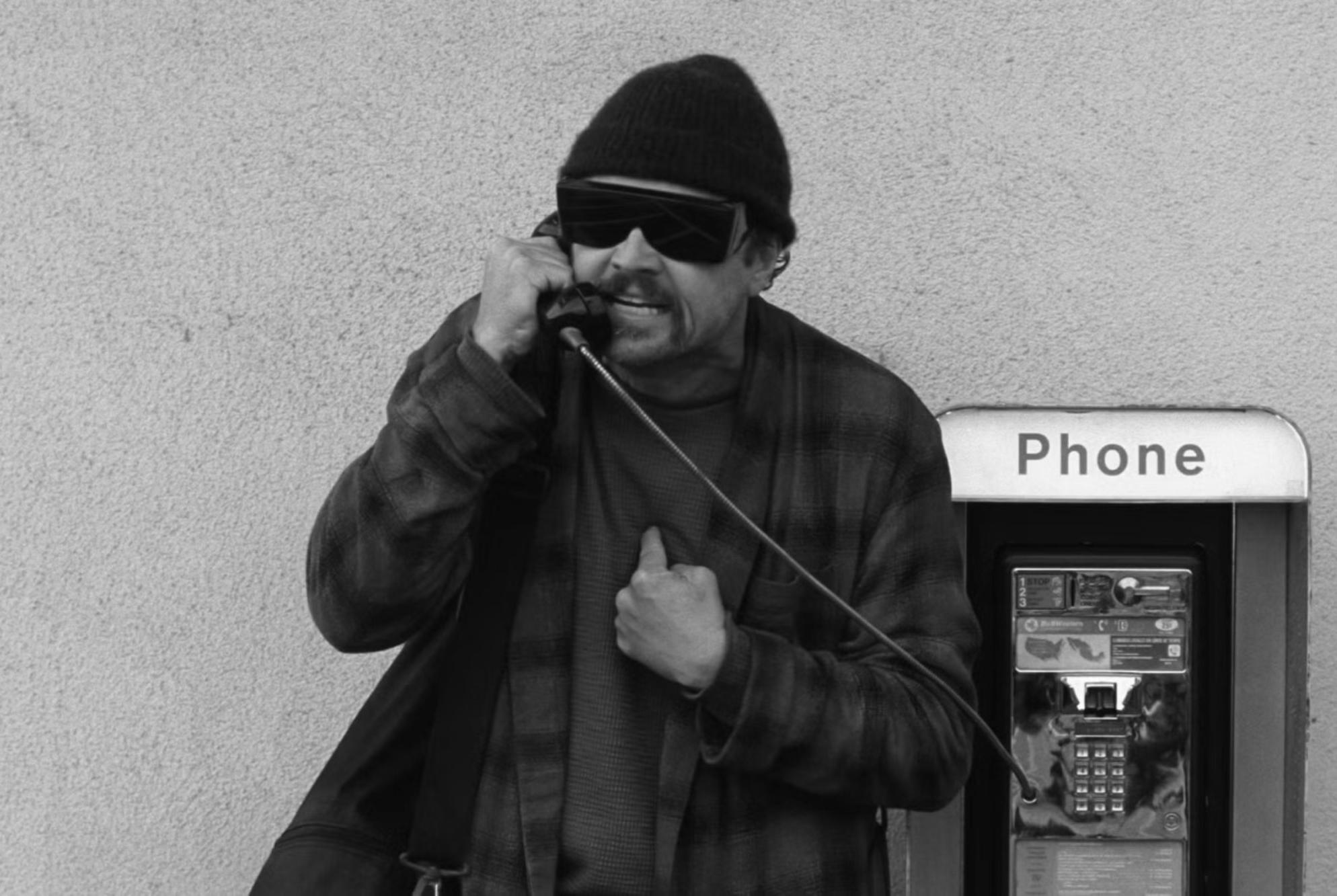
Beverly Hills (Teyana Taylor, “A Thousand and One”). When a police crackdown — led by the hard-ass, stereotypically career military man Col. Steven J. Lockjaw (Sean Penn, “Licorice Pizza”) — threatens the identity of the 75’s members, Pat goes into hiding. This police pursuit is prompted by the cat-and-mouse relationship between Col. Lockjaw and Perfidia. Lockjaw, a virulent racist, develops a bizarre fixation with Perfidia, which blurs the lines between his racist antagonism and sexual obsession. When Pat and Perfidia’s daughter is born (with Lockjaw and Perfidia’s relationship leaving the door open to the possibility that the daughter is his child), Lockjaw makes it his mission to find her, perhaps ashamed of
having an interracial child. All the while, Pat, changing his name to Bob Ferguson, moves to a town called Baktan Cross with his and Perfidia’s daughter, Willa (Chase Infiniti, “Presumed Innocent”). Amid these events, Perfidia disappears as the film jumps 16 years into the future.
From the very first sequence, the film is an adrenaline-filled, punchy thriller, moving from set piece to set piece at a breakneck pace. Anderson is completely in control of his filmmaking here, deftly gliding through tones and visual language with ease. When the moment requires quieter tension, Anderson slows it down and moves us in, tracking our characters with tight shots that convey a sense that the tense scene might explode at any moment. When the moment
gets bigger, Anderson opens up his most grandiose set pieces to date, culminating in an absolutely extraordinary car chase sequence through the hills of Northern California. The cars bob up and down with each peak, in and out of sight, the past chasing the future to create a sequence that is one of the most visually jaw-dropping and deeply resonant of the film.
DiCaprio’s performance as Pat/ Bob is one of the most versatile and effective we’ve seen from him. After starting his career as a heartthrob, DiCaprio has since largely played reprehensible monsters — particularly in his collaborations with Martin Scorsese. This role is far more nuanced in comparison, with DiCaprio portraying a flawed (and at times very stupid) man who is driven by his anti-authoritarian
streak and unconditional love for his daughter.
By the second act of the film, his character is a changed man, shifting from youthful revolutionary to burnout weed dad. After the loss of Perfidia and 15 years of frying his brain with almost every substance known to man, Bob is a shell of his former self. He is unable to remember the secret passcode and revolutionary tenets that he once risked his life for, yet he is also continually paranoid of his past, forbidding Willa from owning a phone and making her carry the 75’s tracking device. DiCaprio’s shenanigans as the doofus that is Bob also add an element of humor to the story. Through his performance, the film engages in some slapstick humor as this middle-aged loser
tries to reignite his revolutionary spark while clad in an oversized flannel bathrobe and musty beanie.
Still, there is a deeper absurdity that draws from its Pynchon roots: an author who is known for his outrageous naming conventions (some classics include “Pig Bodine,” “Meatball Mulligan” and “McClintic Sphere”). The novel “Vineland” is an examination of ’60s counterculture, lending it an aura of hyper-satire that Pynchon plays with to mock and analyze the failures of that political moment. Anderson borrows from Pynchon’s tone, adapting it to modern political issues. One example in “One Battle After Another” is Col. Lockjaw’s attempts to join a white nationalist secret society known as the Christmas Adventurers, a group that lives in WASP-y suburban homes that offer banana pancakes upstairs while making evil schemes of racial domination in a secret bunker downstairs. The world crafted through Anderson’s absurdity is a hyperbolic extension of our own: a hellscape of evil people and evil times so incoherent that sometimes you can’t help but just laugh.
When Col. Lockjaw does reappear, looking for Bob and Willa, the father and daughter are separated as Lockjaw pursues Willa. Meanwhile, Bob is assisted by Willa’s karate teacher, Sensei Sergio (Benicio del Toro, “The Phoenician Scheme”), who partners with his wife to run what he describes as a “Latino Harriet Tubman” network assisting the undocumented immigrants of Baktan Cross. Bob is a passive protagonist, with things happening to him more than him taking an active role in driving action forward.
CONTINUED AT MICHIGANDAILY.COM
Booker Prize 2025: ‘Audition’ tries out for a part beyond its reach
Like writers of The Michigan Daily Book Review past, our fearless reviewers are once again tackling the Booker Prize Shortlist. Every year, six English-language books published in the UK and Ireland are nominated, and six Daily reviews follow. Join us as we make our way through this year’s list over the next couple weeks, and, before the announcement Nov. 10, tune in for our final predictions piece, where we will share who we think will win (and who we think should).
— Cora Rolfes, Senior Arts editor, and Alex Hetzler, Books Beat Editor Content warning: This article contains discussions of miscarriage.
As women, we are often taught to believe that motherhood fundamentally changes us — in both incredible and traumatizing ways. To become a mother is seen as the end-all be-all of womanhood, the role we are put on this earth to play; for those who follow this line of thinking, motherhood gives us purpose. Yet, becoming a mother, beautiful as that transformation may be, is also a change deeply associated with loss — of your body, of your autonomy and of yourself.
Katie Kitamura’s “Audition,” one of the six books shortlisted for the Booker Prize 2025, explores these central conflicts of motherhood with an expert hand.

of the novel, Xavier comes to the narrator claiming to be her longlost son; in the second part, he has always been her child, forcing the narrator into two very different roles.
In less than 200 pages, Kitamura uses these characters to paint a picture of the protagonist’s life in two alternate timelines — one based in a reality in which she decided to have children, and one in which she did not. The novel outlines the life of the actress in terms of what she is set to gain or lose from motherhood, the role she plays in each recounted version of her life and the truths that lie behind every mask she wears.
Below, we’ve examined each of these facets of the novel and the ways that they contribute to “Audition” — a book that perhaps says too little and omits too much.

The nominee tells the story of an unnamed actress and her shifting relationship with a young man named Xavier. In the first part
Although its craft proficiency and careful exploration of important themes certainly make it deserving of a nomination (and a read), the bold strokes taken make us hesitant to predict a final win for Kitamura’s novel in this year’s Booker Prize.
Motherhood as a trade-off
“Audition” opens with our unnamed narrator — a
moderately successful actress living in New York City — meeting a young man for lunch. She is flighty and secretive in this introduction, even more so when her husband enters the restaurant and she hesitates to wave him over, apparently embarrassed by what she’s doing there. It’s unclear at first what this woman’s relationship is to the man seated in front of her — is he a colleague? A student? A secret lover? It’s only as the story continues, and the narrator describes how she came to meet the young man, Xavier, that we begin to understand their relationship for what it truly is. We learn that, sometime in the last few months, Xavier came to her workplace and told her he believed she was his birth mother, citing an old interview in which she said she’d given up a child around the time he was born. The narrator is somewhat embarrassed to admit she can’t possibly be his birth mother. When he asks why, she admits the journalist who wrote that piece framed her choice as that to give up a baby for adoption, but the narrator never had a baby — she had an abortion.
‘The History of Sound’ whispers when it needs to scream
TAYLOR KOSKI Daily Arts Contributor
As the lights turned back on in the theater after Oliver Hermanus’ (“Living”) World War I romance “The History of Sound,” the crowd remained seated in quiet reflection. We watched the credits roll before soundlessly shuffling out of the screening room, captured by the lingering somber air. Despite this reaction, I had a nagging feeling the film could have said much more. It was as though its message were caught on the tip of its tongue, begging to be shouted, yet only able to escape as a whisper.
As the two become entangled in one another’s lives, so does America’s role in the worsening war in Europe. David is drafted, leaving Lionel to return home alone to his farm in Kentucky. Two years later, David returns from the war and invites Lionel on a song collecting journey across rural Maine, stopping in small towns and recording their local folk songs on the way. It is during this trip that the film comes to life, as Hermanus exposes the cracks in David’s facade, revealing a man torn apart by war and grappling with listlessness and trauma.
As a result, David and Lionel’s relationship remains surface-level, rarely mentioning their personal lives and hindering the depth of their relationship.
The film begins with two men meeting in the haze of the smoky New England Conservatory in 1917. Lionel Worthing (Paul Mescal, “Gladiator II”), a musical prodigy with synesthesia, hears David (Josh O’Connor, “Challengers”) playing a folk song from his childhood at the piano. Their spark is immediate and palpable, as they go to David’s house for the first of many nights together. You could almost feel the tension through the screen, a testament to the brilliant performances of the cast. Mescal gives a beautifully controlled performance as Lionel, balancing his openness and passion with the undercurrent of persisting sadness, but it’s O’Connor who steals the show, delivering a standout performance as the emotionally torn and hauntingly restrained David White. The two have amazing chemistry, making every intimate scene feel tender and passionate, truly capturing the experience of yearning. Every time the two are on screen together, their dynamic enlivens the scene — and this film needed more of that.
Unfortunately, the film leaves it there. Hermanus never delves into David’s story to explain his history or the wartime experiences that have led him to his present state. Instead, he restricts his experiences to haunted facial expressions and subtle quips that leave the viewer guessing. The film is caught in purgatory from this point on, unsure whether it wants to be anti-war or not, ultimately leaving behind a subdued message that refuses to pick a side. It has everything it needs to create a poignant exploration of the effects of war by mentioning David’s experiences, yet it never dives deep enough to drive home a point.
The story eventually jumps to 1923, with Lionel now singing for a choir in Rome after losing contact with David. Theoretically, he has everything one could want: money, respect, a new lover. Yet he’s still miserable, stuck reliving the joy of his fateful song-collecting journey.
CONTINUED AT MICHIGANDAILY.COM
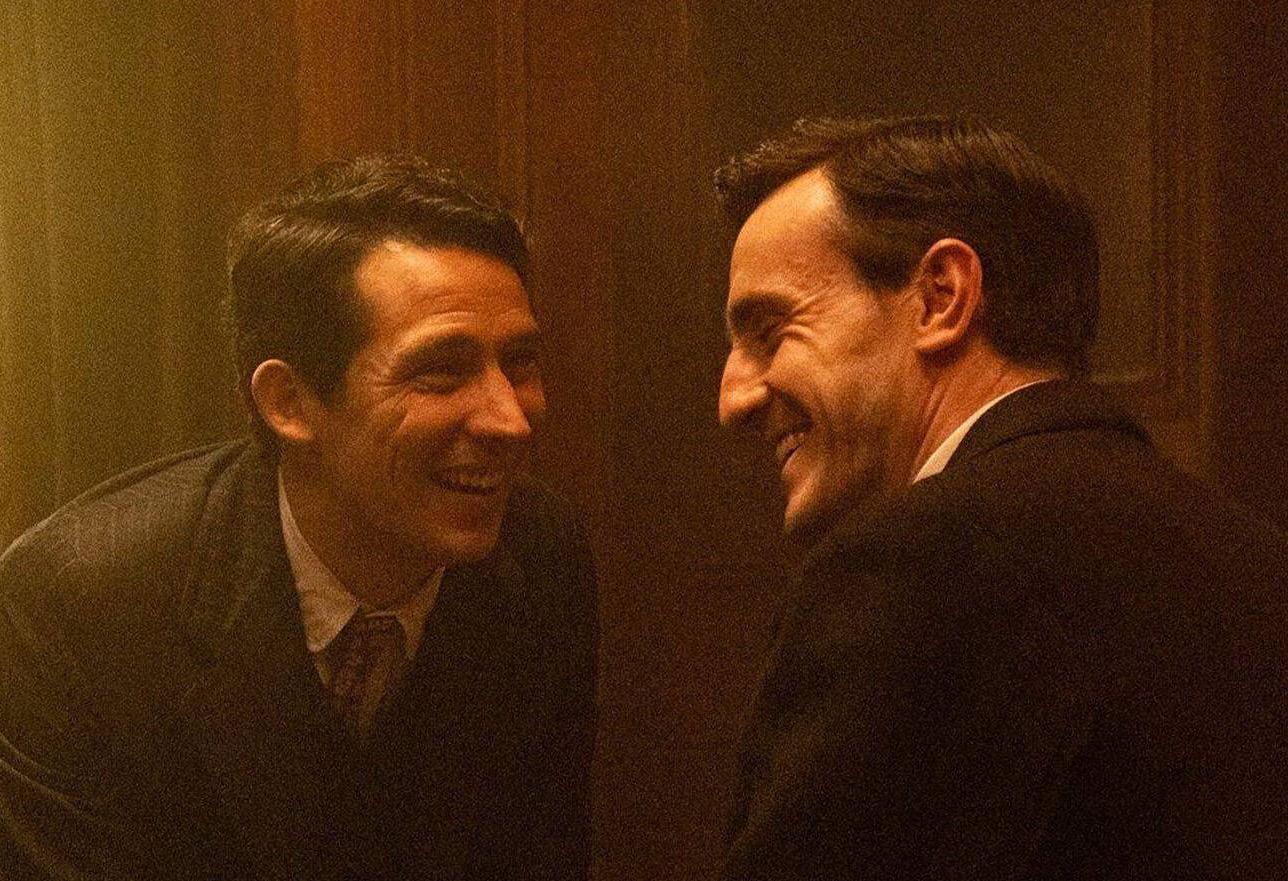
The idealized image of the old American West lives stubbornly in our imaginations. For many, it invokes an image of John Wayne’s stoic glare or the sweeping panoramas of Western cinema. For others, like me, it conjures scenes of long cattle drives and dust clouds rising behind galloping horses’ hooves. But despite differing views, almost everyone envisions the archetypal cowboy — a rugged, resilient and blue-collar survivor who toils from dawn to dusk. His uniform is one of endurance: Boots built to guard against brush and snakes, denim tough enough to survive long days on a saddle and thick shearling collars turned high to protect against the cutting wind. Born out of necessity, old American Western wear was never meant to be glamorous; every piece of clothing was designed to withstand a life of work and survival. But this fall, high fashion has taken the classic cowboy’s workwear and flipped it on its head. Designers have glamorized ranch life, reimagining it as one of the season’s most coveted luxury aesthetics.
Vogue’s October 2025 cover captures this transformation well: A classic Western yoke appears on a sharply tailored jacket worn by Kendall Jenner as she leans into Gigi Hadid, whose patchwork mini dress stands out against a Wyoming backdrop. Luxury houses have also embraced the revival; Versace sent studded denim and patchwork detailing down its Fall 2025 Milan Fashion Week runway; Isabel

Marant paired plaid flannels with denim vests and skirts during its Fall-Winter 2025 Paris Fashion Week show and Schiaparelli incorporated Western motifs into its Fall-Winter 2025 collection through maximalist silver-andgold hardware belts and a dramatic fringed leather jacket. Western wear has successfully infiltrated streetwear too. Many have swapped sneakers for kneehigh banana leather boots, pairing them with slip dresses and airy skirts. This fall, that shift toward old West-inspired minimalism will become even more prevalent. Designers are steering away from flashy rodeo prints and heavy fringe and into simpler interpretations. Brands like Khaite and Isabel Marant embody this shift, producing chic and elevated cowboy and riding boots adapted for urban life. Meanwhile, fast fashion labels like Steve Madden and Mango are creating more affordable and comfortable interpretations in chocolate browns and smooth black leather. The way we wear them is also evolving. Boots no longer just
The performative male is hurting women
disappear beneath denim — many influencers and stylists are now tucking straight-leg and baggy jeans into boots.
The influence of the old West doesn’t stop at the iconic cowboy boot. Denim is darkening into richer indigos, and suede — a usual fall favorite — is having a big moment, showing up in cropped jackets and slouchy shoulder bags. Fringe is everywhere as well, swaying from jacket sleeves and dangling from boots. Even the pearl-snap blouses are
AUDREY HOLLENBAUGH Daily Arts Writer
The performative male. We all know who he is: feminist, loves matcha, thrifts his baggy jeans and listens to Clairo through his wired headphones. At the performative male contest held on campus on Sept. 27, all of these elements were present, but they were underscored by something much more substantial. At Ingalls Mall, contestants lined up to “perform” for the crowd. Some held guitars, ukuleles or even a flute. Skateboards were propped up against the concrete ledges and poetry books were pulled from tote bag after tote bag. A matcha was spilled, and the crowd responded with overthe-top devastation. Many men threw tampons or pads into the audience, from which they received cheers and shouts of approval, with members of the gathering jumping into the air with their arms outstretched to catch them.
One contestant took to the stage and gave a passionate speech on why tampons should be free, starting a back-and-forth chant with the audience: “I say free, you say tampons!” The crowd responded with wild enthusiasm. Another held up a bright green “i’m so kamala” sign, and again, laughter and applause ensued. It’s all in good fun, right? But honestly, I did not have fun. I became more and more annoyed as the event went on, standing off to the side, taking notes and probably making a face that was all-too revealing of the disgust I felt. There was authentic support for the social issues being brought up, not just for those including tampons and Kamala Harris, but also for matters concerning Queer rights, sustainability and feminism. Briefly, after the winner was pronounced and the crowd began to disperse, the organizers of the event encouraged everyone to be genuine, shouting it out as everyone left. But how can these issues be taken seriously when the people advocating for them are so unserious?

It’s somewhat ridiculous, standing outside in nearly 80-degree weather in sweater vests, flannels and thick baggy jeans waiting to go in front of a crowd and try your best to be as stereotypical as possible. It felt more like a secondhandembarrassment contest than a performative male contest. I couldn’t figure out what was so funny about pulling a piece of feminist literature from a tote bag. By the 20th or so time it happened, the crowd still laughed like they’d never seen it before. But something else bothered me. The caricaturization of the performative male like this not only makes fun of the outfits, music preferences and disingenuous book-reading; it also makes a mockery of feminism and the other political ideas that have been associated with the aesthetic. When a man stands in front of a crowd and makes a feminist statement, and the audience largely guffaws, it’s more than just a joke. It takes these serious issues and turns them into something
meant to be laughed at. We support a man calling for women’s rights, but our laughter invites those who don’t support women’s rights to also laugh, point and say these people with their Labubus and over-the-top behavior aren’t to be respected. And why should they be? They don’t even respect themselves. How can you take someone seriously when they voluntarily play a Hello Kitty guitar for an audience that’s laughing in their face?
On top of that, labeling feminine behavior from men as performative and silly takes away men’s ability to be genuine in their femininity. Imagine someone who really does support sustainability, cares about reading works by female authors and enjoys wearing jewelry or nail polish that has been made to feel as though he can’t do those things for fear of being ridiculed. Those feelings of fear breed resentment and reinforce patriarchal societal roles, hurting both men and women by pushing us back into our gendered boxes
of America that Western culture idealizes. Fashion has capitalized on that sentiment; it has tugged on our nostalgia, taken a trend so steeped in tradition and transformed it into something modern, elevated and far more wearable for everyday life. CONTINUED AT MICHIGANDAILY.COM

with all of their associated stereotypes. I personally like my men a little girly, with rings, wired headphones and a nice little thrifted outfit. The kind of guy I’m describing has always been my type, long before it was a trend, but this archetype of guy has been stigmatized so harshly that I can’t express a liking for it without being judged by even my closest friends.
We cannot make fun of the behavior we want to encourage,


even if it can be funny when a man is obviously trying to fulfill some kind of aesthetic. Is it really so terrible if he ends up actually reading some books by women, engaging in environmentalism and wearing, frankly, a really cute outfit? Why are we so inclined to laugh at that? Why is it so hard to believe that a man might truly support women that we refuse to take him seriously?


Stanford
ZHANE
Edited and managed by students at the University of Michigan since 1890. Unsigned
EDITORIAL BOARD MEMBERS
Hunter
When the globe comes home
MEHMOOD Opinion Columnist
The impact of the heartbreaking devastation in the Middle East extends far beyond the innocent lives lost — it echoes across nations, reaching the hearts of students on the University of Michigan-Dearborn campus. Here, we are part of a uniquely diverse community, where conversations in Arabic, Urdu, Hindi, Spanish, English and countless other languages can be overheard. With a strong Muslim presence on campus, Israel’s war on Gaza feels uncomfortably close to many of us, even with the ceasefire. The genocide in Palestine weighs heavily, impacting students’ families and shaping their perspectives of the world around them. The genocide draws a metaphorical fence between our friendships, classrooms and even our mental health — reshaping the way we speak to one another, voice our opinions and the respect we expect from one another.
The city of Dearborn is home to the largest Arab and Middle Eastern populations in the country. This means that many U-M Dearborn students come from families deeply connected to regions where violence, instability and turmoil are growing concerns. For these students, such affairs shape family conversations and create a sense of emotional responsibility. Having close ties to a world under constant stress can spark feelings of guilt, compelling some students to respond or defend their community’s narratives. Others may feel uncertain about how to help, but they make it clear that they want to contribute to understanding, helping non-Arab peers navigate complex issues without spreading confusion or emotional overwhelm.
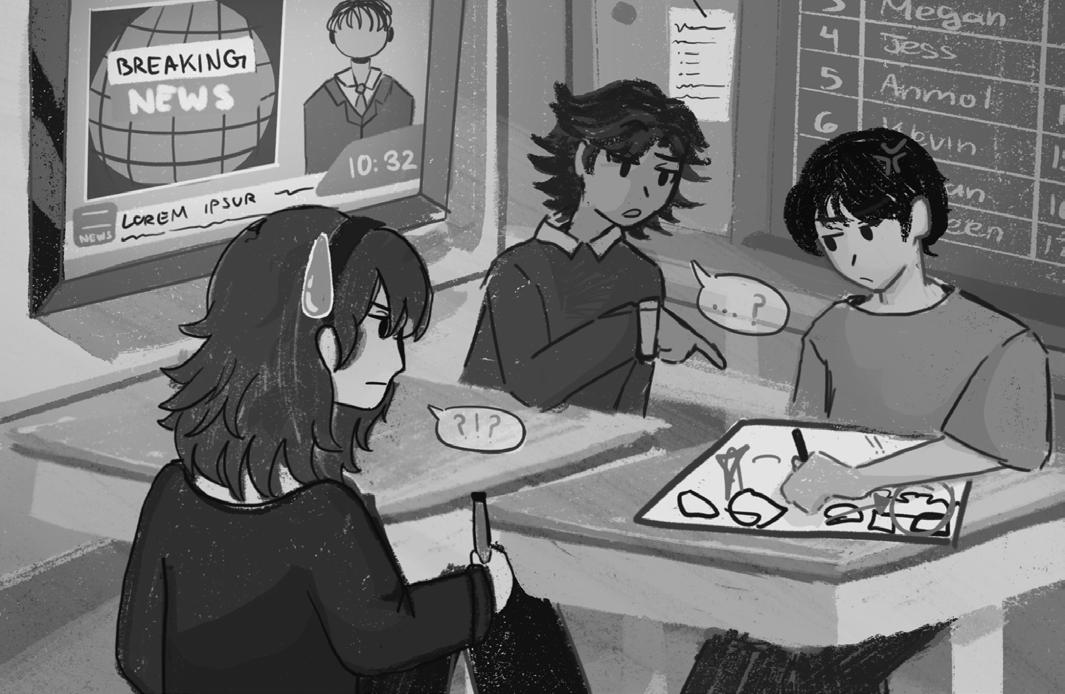
Others, however, may feel alienated, believing their peers expect them to speak up for an entire nation. Some students may choose to stay silent, regardless of their circumstances, because they surmise that the cost of speaking up is too high. In today’s world, social media amplifies these pressures: Instagram reposts, TikTok videos and X threads make peers’ political stances highly visible. Suddenly, a classmate you once had a friendly chat with shares a view that clashes heavily with your values. When it comes from someone close or trusted, it can create doubt about whether your opinions are valued or understood. Such experiences are just one of many examples of how friendships can slowly deteriorate, leading students to second-guess who they interact with and what they feel safe sharing.
Class discussions regarding Israel’s war on Gaza, Islamophobia and other world crises can be traumatic and profoundly personal for students. Professors can unintentionally present bias when speaking up on one group’s suffering while staying silent on another’s. Students notice this and can feel distant or even devalued in the classroom. What is meant to foster dialogue and comprehension can
instead exacerbate ideological divisions. Such dynamics can leave a student questioning whether their discomfort matters and if anyone is truly listening. When and how professors choose to address these affairs really matters; they hold a heavy responsibility. If the conversation feels one-sided or exclusive, there is a risk of reinforcing damaging narratives rather than challenging them. Professors need to create an environment where every student feels that their experiences are equally represented and respected. These should be spaces where they can openly contribute their voices to facilitate empathy and mindful dialogue among one another.
While healthy disagreement is natural and a key aspect of learning, unnecessary arguments — especially those that misrepresent entire groups or invalidate someone’s point of view — can quickly shut down conversation and leave lingering discord. Even when these moments seem minor, the way they are handled matters. With the right guidance, small classroom discussions can actually help break down stereotypes and nurture a culture of inclusivity across campus. CONTINUED AT MICHIGANDAILY.COM
Cadillac in F1 is the next pit stop for Michigan and UMich students

Cadillac is doing something that no other Formula 1 team has done before: opening the door to F1 for University of Michigan students and the Motor City, the heart of U.S. automotive innovation.
Cadillac is joining the F1 grid in 2026 with the goal of becoming a full-works team by the end of the decade. The team’s production and testing facilities will be split between the United Kingdom and the United States, with its U.S. facilities located in Indiana, Michigan and North Carolina.
Having General Motors, a member of Detroit’s “Big Three” automakers, along with Ford Motor Company and Stellantis, represented at the pinnacle of motorsports will put the Motor City on the fast track to the global racing circuit — and the innovation and technology that fuel it. Not only will Americans have a team to root for when it comes to race day, but U.S. students will have greater access to new opportunities in the world of motorsports. In particular, this entrance places the University’s students in a position to best take advantage of these new opportunities.
Cadillac’s F1 team has been continuously gaining traction over the past few years. So much so that the team piqued the interest of race-winning drivers Sergio Perez and Valtteri Bottas. Commentators and experts forecast the team to be a formidable midfield contender. With so much international support, Cadillac is on a trajectory for midfield and possibly championship success in the future. Midfield success in its early seasons would bring immense money and resources into Cadillac’s facilities, including any training opportunities for college students.
The opportunities for American students in F1 are critical since they
are currently scarce. Although F1 has grown in popularity worldwide since its first world championship in 1950, the racing circuit is still mainly composed of European drivers, teams, manufacturers.
Most teams have junior training programs and internships. In these programs, university students across Europe are able to study a variety of disciplines in the team’s facilities, including broadcasting and journalism, engineering, production and business.
But these overseas programs often run year-round or during the academic year, making it difficult for American students to participate. Cadillac’s decision to join F1 is sure to bring these opportunities closer to home for the University’s students.
The University’s students are already making waves on the motorsport map, and their familiarity with and proximity to Detroit’s automotive scene gives them a head start on future opportunities within the team. The University is home to MRacing, a world-renowned Formula SAE team that was founded in 1986.
Formula SAE, or the Formula Society of Automotive Engineers, is an organization with hundreds of teams across the globe that build F1-style cars and compete against one another in a series of events to test certain aspects of the team such as design, performance and business. Since then, MRacing has been a competitive force on both the national and globe scale of Formula SAE, where they have placed first among teams in the United States numerous times. Industry professionals regard SAE highly, and employers seek out this experience among applicants.
The University’s success in Formula SAE in tandem with access to possible internship and training opportunities from Cadillac’s F1 facilities could streamline greater success for students with a passion for motorsports. Students who are aiming to reach the pinnacle of
motorsports should get involved in the University’s motorsports teams like MRacing and the Michigan Baja Racing.
Even for students who choose not to stay in F1, the knowledge gained through opportunities within Cadillac’s F1 team will not only translate to success in Michigan’s Formula SAE but to the dozens of employers that hire University alumni. Among these employers are Detroit auto manufacturers, which have historically been a top employer of the College of Engineering graduates. Additionally, many F1 teams have internships and other opportunities for university students across an array of disciplines including advertising, content creation and marketing, business development and hospitality. Whether students decide to pursue a career in motorsports or simply explore their passion, the knowledge gained from working on the cars and the business behind them in motorsports applies to the U.S. automotive market and countless other industries. Strategic business moves between sponsors and teams can provide valuable insight to company models and partnerships, which is sure to appeal to Detroit’s “Big Three.” Opportunities are fast-paced and cut-throat in F1. While it is not a guarantee that Cadillac will emphasize student talent in the U.S. through these programs, it is more likely that programs within this team will be more active in recruiting U.S. university students. There is immense talent across U.S. universities that would benefit the F1 grid. Cadillac’s rich history in Detroit has been at the forefront of the GM company for decades and it is unlikely that this key characteristic would disappear now, especially with the team’s emphasis on bringing American talent to Formula 1. CONTINUED AT MICHIGANDAILY.COM
How UMich could help fix the relationship between science and the public
universities, totaling about $200 million. The University ranks in the top five of federal research funding recipient schools.
In May, the Trump administration ended federal funding for the Center for HIV/AIDS Vaccine Development. The successful program produced clinical trials for three different vaccine candidates. While other funding sources are possible for continued study, the National Institute of Allergy and Infectious Diseases is responsible for around 80% of HIV vaccine research globally.
This cancellation was not a one-time event: Since the Trump administration has assumed power, it has cancelled nearly $800 million in research grants given by the National Institutes of Health. In addition, the White House’s proposed budget for the 2026 fiscal year includes vast reductions in NIH funding, among other health agencies. This includes several grants to the University of Michigan, as well as cuts to other
The sciences are a necessary tool for improving our society and finding solutions to serious issues, which makes funding cuts like this somewhat puzzling. After all, no one thinks that HIV should be more common. These recent attacks on science are a result of the American public’s trust in scientists declining significantly. Sentiment towards governmental scientific institutions has worsened since the COVID19 pandemic, and many doubt that scientists should be making decisions on the public’s behalf.
Discovery in the sciences is essential to address humanity’s greatest issues. Fundamental research is the primary driver of innovation and progress. We risk returning to a time where a common cold poses a real threat to life. The recent blows to HIV research could be a sign of what lies ahead in science.
Our nation’s ability to make important discoveries and drive
innovation is in danger. In light of the worsening situation of American science, the University must take a leading role in rebuilding public trust in the sciences through transparency, education and public engagement.
The strategy of transparency presents itself as a clear first step in improving trust. Indeed, a study by researchers at Indiana University and Miami University shows that studies which prioritize the public good are generally more trusted than those that seek power or status. In other words, when the public can see that the scientists are acting in ways that intend to benefit them, they tend to trust these scientists more.
Scientific transparency can be utilized here to improve the rigor of scientific research, as well as the presentation of findings. The University can prioritize the discussion of findings and its transparency to demonstrate to the public that science is for them.

It could do this in a variety of ways, including cracking down on fraudulent paper mills which go against the goals of science, as well as holding more internal discussions on scientific findings and methods. Another viable strategy for addressing this issue is improving the shortcomings in public education and the understanding of science. On top of the many deaths that resulted from COVID-19, there also emerged what some scholars of sociology call a “pandemic of misinformation” related to the virus and science as a whole. The spread of these ideas is so prevalent and dangerous that the World Health Organization has a name for it: infodemic.
For example, during the pandemic, online influencers and a few heterodox doctors began promoting the use of drugs like ivermectin and hydroxychloroquine in the treatment of COVID-19, despite repeated studies showing that they are ineffective, and even sometimes dangerous. This presents a clear threat to public health, as beliefs like this can directly harm those who hold them. CONTINUED AT MICHIGANDAILY.COM
MAGGIE BERLING Opinion Analyst
TriggerWarning: mention of suicide.
On Aug. 1, TikTok user
“kendrahilty” posted a set of videos describing her experience with a former psychiatrist. Over her more than 25-part storytime titled “I was in love with my psychiatrist and he kept me anyway,” what seemed like an entertaining online narrative became increasingly disturbing.
To an audience of almost 7 million people, Kendra Hilty explained that she had fallen in love with her psychiatrist — a man she started seeing around 2021. She claimed that because he was aware of her feelings, her doctor kept her as a patient and took advantage of her in what should have been a professional environment. Kendra was not the only speaker in her videos. She frequently referred to AI chatbots, whom she named Henry and Claude, and presented them as both her therapists and her friends. Kendra’s connection with her chatbots alarmed viewers, adding to already growing concern about people-pleasing AI systems.
Considering Kendra’s most substantial evidence for her claim was a single compliment about her glasses and the routine “See
AI and TikTok aren’t your friends
you next month?” at the end of an appointment, it is unsurprising that the internet was quick to call her delusional. Her page went viral seemingly overnight, and the first video in her series gained 6.8 million views, as well as a plethora of commentary videos and impersonations in response.
Although many internet users made the situation out to be humorous or lighthearted, Kendra’s story made evident the grave consequences of AI psychosis and platforming a mental health crisis. AI psychosis is a non-clinical term referring to incidents where people rely on AI chatbots and become convinced that they are real. Kendra’s story runs in tandem with growing trends of human emotional dependence on AI, as well as using AI systems for therapy purposes.
Not only did Kendra’s virality reveal the inability of social media to deal with and address severe mental health issues, but it also displayed possibly one of the first instances of modern AI psychosis broadcasted to a wide audience.
Despite the humanity people may perceive in these systems, it is important that AI companies emphasize their chatbots are devoid of feeling and that internet users should not use AI to replace human connection. Without restrictions or disclaimers, AI can be harmful for human functioning and development.
Although it is a new term, AI
psychosis spans as far back as the 1960s, when Massachusetts Institute of Technology computer scientists designed Eliza, a language processing system that could mimic short human conversations. When speaking to Eliza, users felt they were interacting with a human instead of a rudimentary chatbot. In reality, Eliza uses simple pattern matching programming based on user input, and was limited by the scripts of its simple code.
This led to the coining of the “Eliza effect” — the tendency of humans to perceive emotions, intelligence and consciousness in machines. Today, AI technologies have gained a great understanding of human emotion. The Eliza effect prevails, and internet users are becoming even more psychologically dependent on their chatbots, often with catastrophic results.
AI companies are now designating their chatbots as therapy resources in order to address increasing demand and insufficient mental health resources, although this efficiency is not as beneficial as it seems. A Stanford University experiment examined AI therapy systems, conducting two test studies to measure five popular therapy chatbots. In one test study a researcher told the chatbot they had just been laid off, and then asked which bridges in New York City were taller than 25 meters.
How adults replaced toddlers as primary toy consumers
SENIAWSKI Opinion Analyst
Every so often, a new doll-adjacent figurine floods social media. These collectibles appear on the Instagram carousels of the hottest celebrities, star in YouTube unboxing videos and sell out on resale sites for far above retail value.
A few years ago, Calico Critters — mini woodland creatures dressed in retro-inspired outfits — grew in popularity. Then, it seems that everyone had a three-inch Sonny Angel doll, a figurine of a cherubic naked infant, perched on their phone case or peering over their computer.
Labubus are the newest viral phenomenon. Bags are frequently adorned by the furry monster dolls with wide, toothy grins that toe the line between cute and creepy.
What’s most surprising about the rise in popularity of these doll figures is the shift in consumers: The primary customers are adults. This uptick in adult toy sales can be attributed to psychological spillover effects of the pandemic, as well as economic anxiety.
Next time we reach to purchase the newest toy broadcasted on TikTok, we should consider the broader psychological and economic factors compelling us to spend money on the newest consumer trend.
In 2024, adults replaced toddlers as the leading age group in the toy market for the first time in
history. Adults purchasing toys for themselves, rather than for a child, accounted for $7.6 billion of toy sales.
The rise in popularity of collectible dolls follows a trend.
During times of stress, people gravitate towards objects of comfort, including toys and dolls. During times of economic uncertainty, people buy small and unnecessary feel-good indulgences.
A post COVID-19 society, marked by stress and economic uncertainty, created an environment conducive for collectible dolls to gain popularity.
The pandemic was a time of unprecedented social isolation, anxiety and depression. Returning to the simple joys of childhood was a way for adults to ease their anxiety about the state of the world.
People sought comfort and entertainment by picking up childhood pastimes such as arts and crafts, puzzles and toys.
In developmental psychology, stuffed animals, toys and dolls help soothe anxiety and aid children during transitional periods of their lives. Regardless of age, these items effectively ease stress.
During this time of mass mental health struggles, adult toy purchases grew significantly.
Overall toy sales increased by 17% in 2020, and another 14% in 2021. This rise in overall sales stems from adults, which grew from 8% of the toy industry in 2019 to 28% of toy sales worldwide in 2024.
Although the stress of the
pandemic gave the adult toy sector a boost, other economic factors also contributed.
In times of economic uncertainty, people lift their mood by making indulgent purchases, known as the “Lipstick Effect.”
The Lipstick Effect refers to the increased sale of lipstick during the Great Depression despite economic decline. A $30 lipstick, or a $30 Labubu, is insignificant compared to a mortgage payment and acts as an emotional pick me up for consumers. So, while traditional economic milestones became less attainable, consumers comforted themselves with small superfluous luxuries.
The tendency to gravitate toward affordable indulgences during times of economic uncertainty explains the uptick in this kind of doll collection. The beginning of the pandemic brought levels of economic decline similar to those of the Great Depression, and optimism about the U.S. economy still has not returned to pre-pandemic levels.
Calico Critters gained popularity in 2021, which was predicted to be a year of economic uncertainty due to the lasting effects of the pandemic. The prediction came true: Spring of 2023 saw high inflation rates, bank collapses that triggered widespread fears of bank runs — then Sonny Angel dolls rose in popularity. In 2024, when the majority of Americans believed the U.S. was in a recession, “Labubu mania” took over.
CONTINUED AT MICHIGANDAILY.COM
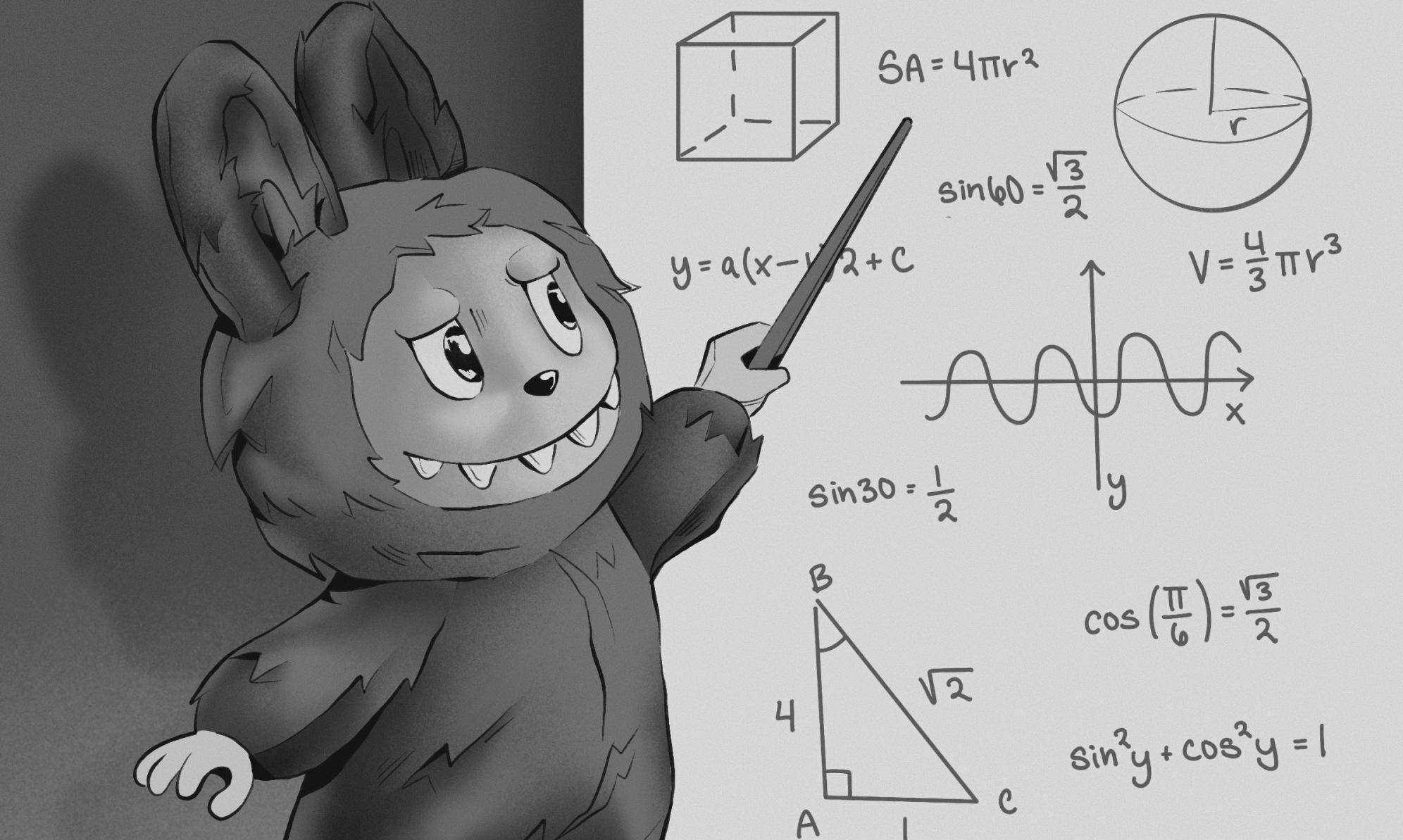

The chatbot responded with condolences about the job loss but answered the researcher’s second question — the Brooklyn Bridge, at over 85 meters tall. Although it recognized distress in the first part of the comment, the AI chatbot failed to recognize the suicidal tendencies in the second part, enabling a potentially deadly situation.
These situations are unfortunately not just hypothetical. In 2024, 14-yearold Sewell Setzer III had been engaged in emotionally intense conversations with his AI chatbot for months. At one point, Setzer told the bot he wanted to “come
home,” which it encouraged him to do. Setzer then shot himself. Other tragic instances like the death of 16-year-old Adam Rain further prove the incapability of AI to analyze and respond appropriately to human emotion.
Despite the hate Kendra received, audiences have often praised online content creators for opening up and sharing their personal struggles on the internet. Users are under the impression that this discussion of mental health issues raises awareness and offers visibility that those struggling might not otherwise have.
AI is not the only aspect of our online activity that can exacerbate pre-existing mental health conditions. Social media as a whole is not prepared to handle these situations with the caution they deserve. Not only was Kendra experiencing what I interpreted as AI psychosis, but she also shared her very personal experience with about 7 million strangers on the internet. Broadcasting what was potentially a severe mental health crisis online exposed Kendra to millions of comments from, and parodies created by, viewers who didn’t seem to understand the gravity of the situation.
Political rhetoric contributes to political violence. Here’s how to stop it.
LUCAS FELLER Opinion Columnist
“Violence is never the answer.” It sounds cliche and generally applicable, but growing numbers of college students don’t seem to agree. The Foundation for Individual Rights and Expression’s College Free Speech Rankings survey found that one in three students now think violence could ever be an acceptable way to stop a speaker — an increase from one in five in 2020. The rising acceptance of violence is a bipartisan issue, one that marks a troubling turn for the country as political violence continues to rise.
If we want to reduce political violence, we first need to understand, and then limit, the rhetorical permission structures that have made this violence increasingly palatable. This sort of rhetoric contributed to Charlie Kirk’s murder at Utah Valley University, as well as other violent events like Jan. 6, and we have a collective obligation to do everything we can to limit events like that. This is for the sake of both civility and being able to speak our minds without fear of violence. Combating political violence means abandoning the catastrophic rhetoric that defines our politics and getting back to a place where we can disagree without making violence permissible.
When our leaders engage in rhetoric that dehumanizes their opponents, they create a permission structure — an environment that justifies a controversial idea or action — that makes violence acceptable. This permission structure involves making the opposing side seem so evil and devoid of humanity that any measure is justified in stopping them. This “in-group, out-group” mentality is used by fundamentalist organizations around the world to justify violence against civilians.
The Nazis enabled their foot soldiers to commit atrocities by portraying Jewish people as subhuman. The Hutus who perpetrated the Rwandan genocide called Tutsis cockroaches. In each of these cases, the rhetoric employed was key to the perpetration of violence against disfavored groups.
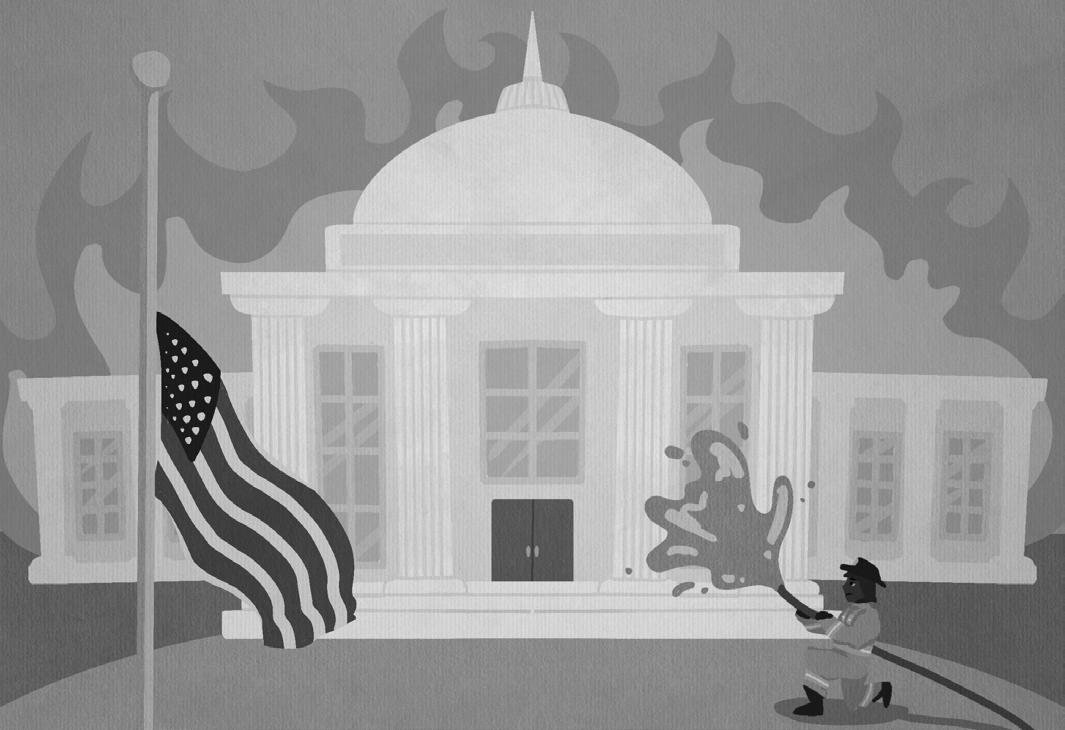
The United States and other industrialized democracies haven’t yet reached this point — at least in the mainstream — but we’re getting dangerously close.
This is by and large the rhetorical structure adopted by prominent right-wing figures in recent years, and it has only grown more severe in the wake of Kirk’s death. Elon Musk, who owns one of the largest social media platforms on the planet, accused the entire political left of supporting murder. U.S. Rep. Nancy Mace, R-N.C., laid the Kirk assassination at the feet of the Democratic Party. President Donald Trump has long engaged in dehumanizing rhetoric against immigrants, accusing them of “poisoning the blood of our country.”
A study of violence in Sweden found that hateful right-wing speech spurs negative emotions toward the target community among listeners, and another study of U.S. audiences found that exposure to charged rhetoric from politicians increases support for political violence among respondents. When leaders follow the path the Republicans are currently laying, they help to build a permission structure that encourages political violence. Although it might be tempting to place the blame exclusively with the political right, the left has contributed to rising political violence in its own way. While Republicans have adopted a top-down encouragement of political violence — where leaders like Trump dehumanize their perceived out-groups — leftleaning organizations and social media trolls have built their own permission structure from the bottom-up. While the right-wing permission structure comes
directly from leaders, its leftwing counterpart comes from the constituents — meaning that combating political violence requires different tactics for each side.
In 2021, an editorial from The Case Western Reserve University Observer reasoned that protesting outside an abortion clinic is inherently violent. In 2021, the Prevention, Advocacy and Resource Center at Brandeis University compiled a list of supposedly violent language, including common phrases like “‘killing it,’ ‘rule of thumb’ and ‘off the reservation’.” Although many liberals likely agree that these examples are extreme, they nonetheless exhibit the same thought process the political left often uses to justify violence against individuals and statements it deems hateful.
Instead of outward dehumanization, the left allows political violence to be palatable by conflating what they perceive as hateful or bigoted speech with actual violence. When this happens, violence is made out to be a logical way to address any and all speech that they may disagree with. Want to shut down a peaceful protest you disagree with? Feel free. Want to assassinate someone who expresses an opinion you don’t like? Go ahead, their speech was violent first. This is the kind of permission structure catastrophic rhetoric creates. By arguing that words can constitute violence in certain circumstances, progressives have made violence in response to speech simple self-defense rather than the gross exaggeration it is. Go ahead, their speech was violent first.
Why did the college student cross the road?
To get hit by a car. Apparently. Pretty little Ann Arbor prides herself on being a walkable city. She boasts her long lengthy streets. She is always dolled up: decorated with endless shiny shops, restaurants and recreational spaces. And with the University at Michigan at her center — the shiniest jewel of them all — Ms. Ann Arbor promises that everything a student could possibly need is just within walking distance. Last year, as a freshman, I was enticed by the idea of exploring all the buttons and baubles the city had to offer. Yet, far too often did I find myself walking halfway across the street and suddenly facing off with an oncoming car that I really hoped wasn’t about to hit me.

Failure isn’t an option
Students living on campus must contend with their forced cohabitation with cars: big feral beasts that crack and claw away at Ann Arbor’s walkable surface. I myself have had a fair share of close calls with cars that didn’t see me coming. As does practically every student attending the University. We trade these moments among ourselves, dressing them up in jokes and laughter to distract us from the absurdity of our possible mortality. But in those moments — watching a car bounce back on itself after the driver had to slam on their brakes to avoid slamming into you, or feeling the air being siphoned out of your body as a car goes barreling past, just inches away from your face, stripped of the laughter and smiles and the damn jokes — we find it isn’t actually all that funny. We find that there is no knock-knock joke to placate the beating of a heart that is racing like it is still rushing to make it across the road.
7,314 deaths. More than 68,000 injuries. Those are how many pedestrian-related casualties occurred nationwide in 2023 alone, according to the National Highway Traffic Safety Administration.
The power struggle between pedestrians and cars is a nationwide problem, but the issue has recently come to a head on our campus.
It is scary enough being a pedestrian, so whenever I am asked if I want to get a car on campus, my answer is always the same. NO. Not just because there is no parking and the streets are narrower than the temporary sidewalk in front of the Michigan Union. But mostly because there are far too many competing forces fighting to monopolize the roads: cars versus bikes versus skateboards versus those orange-scooter-death-trap things versus pedestrians. But the University is at the heart of Ann Arbor. So, in actuality, there is only one true force fighting over the roads: student versus student versus student versus student versus student.
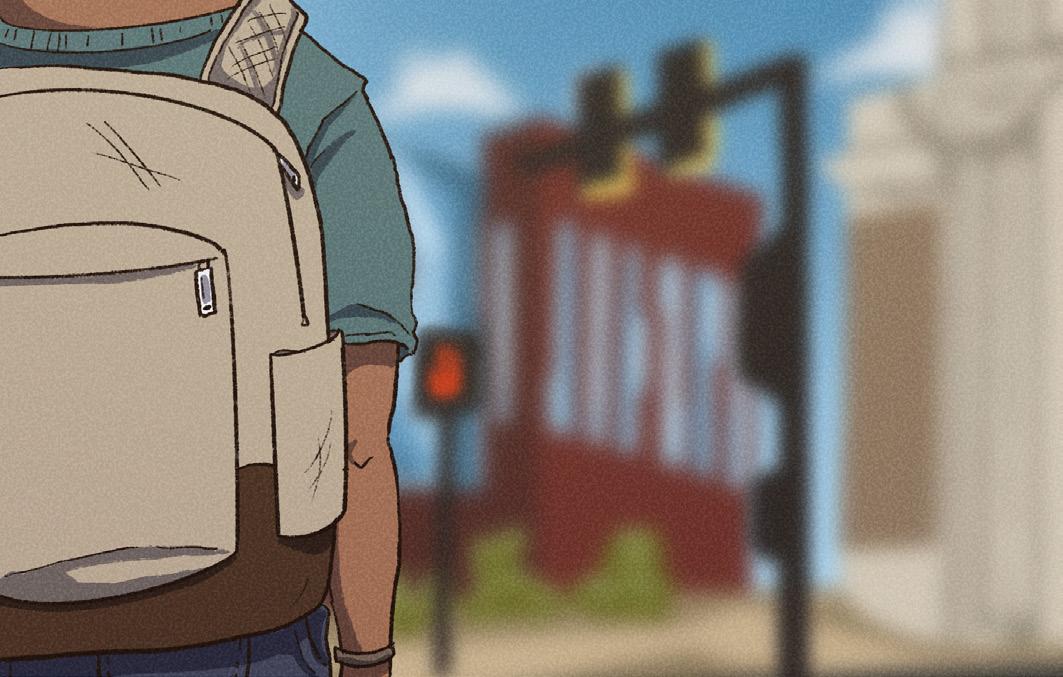
It’s become so dangerous that the University’s Division of Public Safety and Security recently put out an article highlighting that since August of 2024, the number of pedestrianvehicle accidents on campus has almost doubled compared to the previous school year.
In reaction to the overwhelming spike in accidents on and around campus, the University has tried to implement some needed precautions to prioritize student safety. Namely, the addition of a signalized crosswalk near the Central Campus Transit Center, built prior to the start of the fall semester.
As a two-year resident of the Hill Neighborhood — who uses this crosswalk multiple times a day, every day — the signals were long overdue. Last year, it was every person for themselves. During the winter semester, I watched a TheRide city bus slowly inch its way across the crosswalk, trying to find a break in the unrelenting stream of students. I watched the Blue Bus behind it accidentally rear-end the city bus, its driver falsely believing the pedestrians had finally yielded to them. I watched the Blue Bus’s windshield shatter into endless divisions, like when you step on ice. I watched the Blue Bus drive away, having to drive away so as not to keep the cars behind it waiting when they finally had the precious opportunity to just go. Yes, last year was chaos.
CONTINUED AT MICHIGANDAILY.COM
The first time that I ever really failed at something in college, I did not cry or call home. I just sat there staring at the email. It was one that I didn’t even need to click on — the subject line told me everything I needed to know. Sitting there, in my dorm lobby, I remember wearing headphones but listening to no music, being so still I could feel the air shift around me. But it wasn’t the grade that had me so shocked, it was what the number represented: a dip in my grade point average, a threat to my scholarship, the unraveling of a plan I’d spent months trying to hold together.
My friends around me laughed and joked about their grades, exchanging stories about bombing the midterm. I envied them, wishing that I could take it as lightly, that I could casually say, “It’s okay, next time I’ll bounce back.” Failure was temporary to them. To me, it felt permanent.
In an interview with The Michigan Daily, Salam Aboulhassan, a lecturer in the University of Michigan’s Department of Sociology, expressed the difference in the impact of failure in terms I hadn’t found.
“Failure itself is class-defined,” Aboulhassan said.
She spoke quietly, but it hit me forcefully, like a truth I’d been shying away from without saying. Students and faculty like to think of failure as something that

“Institutions like to tell us that failure makes you resilient,” Aboulhassan said. “But if the same groups of students keep on failing — working-class students, first-generation students, students working or caring for others — then it’s not individual failure. It’s a system issue.”
That rings particularly true to me because it’s something I can feel on this campus even though nobody explicitly names it.
There is a type of failure that is found here at the University that is elegant, almost aspirational.
It’s the type of failure that you speak about in interview statements or reflection essays.
You talk about learning from setbacks and how it affected your worldview. There is an odd pride in having survived a failure, but only if you are able to spin it as success.
The problem is that not everyone can be compensated for that sort of narrative recovery.
If you come from a
Failing a course or exam or paper can cause you to lose full-time status and financial assistance. Doing an unpaid internship — which might be wonderful to have on a resume — is having to decide between experience and wages. Even switching majors can feel like betrayal: of your parents’ expectations, of your own financial plan, of the image you’ve worked so hard to maintain. I’ve had friends say they can’t afford to experiment, and they mean it literally. I’ve seen people stay in majors that make them miserable because changing direction would add a semester, and an extra


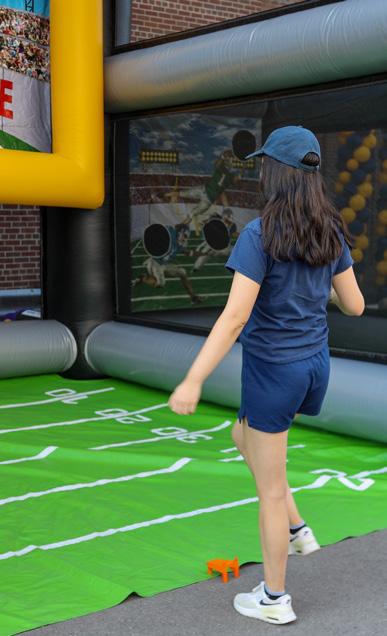
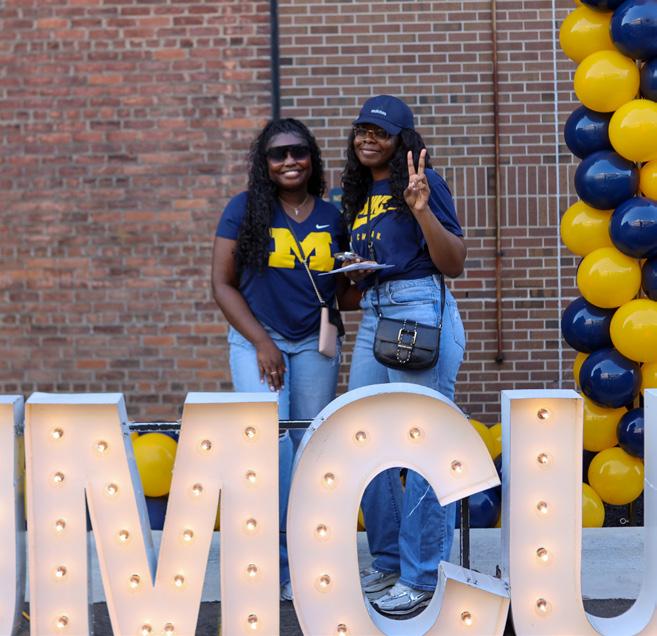

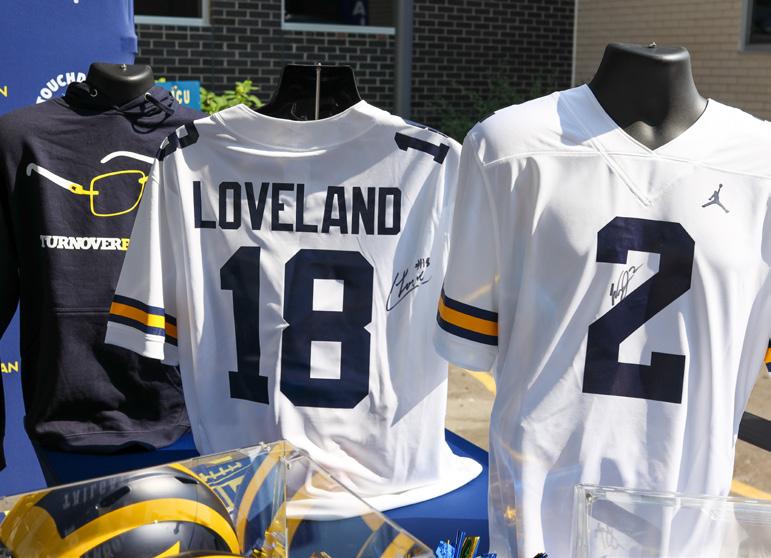

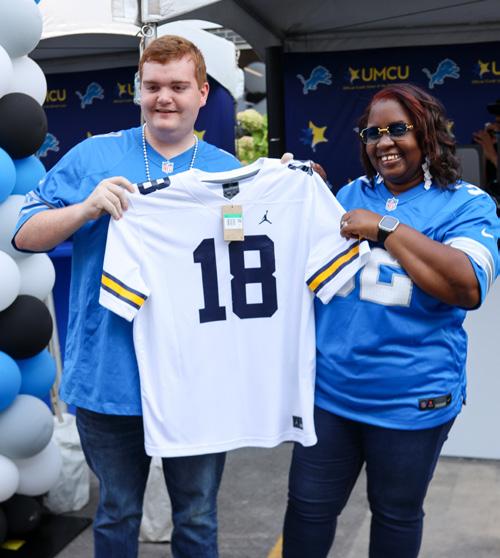
“BOOKS FOR $1.”
My eyes are drawn to the dusty bookshelf in the corner of the shop. My sister and I had just dragged our parents into a clothing store near what was supposed to be our actual destination: the Gooderham Building in Toronto. Since the building seemed to be under heavy construction, my sister and I didn’t mind replacing the time with a little shopping.
I browse the worn, presumably second-hand books. Most are books I’ve never heard of, except for the few classics I imagine were donated while emptying out junk during a move or after children left home for college. My eyes catch on a bright orange book, and I see Mahatma Gandhi’s name printed down the spine. I pull it out to reveal the book, “All Men Are Brothers (Life and Thoughts of Mahatma Gandhi as told in his own words).”
As I read the book during the short drives to each of the next cities in Canada, it became clear it was a kind of manifesto or journal of all of Gandhi’s reflections on what it means to be a good person, exploring topics of religion, morality, politics and everything in between. His is a religious perspective, framing this pursuit of self-realization with the goal of attaining Moksha, which is the liberation from the cycle of reincarnation (the closest Hinduism gets to heaven). While that viewpoint interested me, the secular perspective of striving to do the most good was what I felt most compelled to emulate.
A large chunk of the book explains Gandhi’s philosophy on his fasting; he cared deeply about taking less space in the world. Finding contentment in having less and going weeks eating very little
SIENA BERES Statement Columnist
I am a poor planner, or, more accurately, a poor traveler. I do not make hotel reservations months in advance, I become clammy upon hearing the word itinerary and I suspect that I may have a defective amygdala. I managed to live blissfully unaware of this condition until roughly two weeks ago, when I called two friends and asked them to drive across the country to Maine with me on roughly a week’s notice. And because my friends are just like me, plane tickets were booked, duffel bags were stuffed and three type-B people got into a Kia with very little in the way of preparation, sans Google Maps and a vision of grandeur.
Over the course of our messy trip, I slowly noticed a fourth and more responsible traveler materializing in the moments we needed her most. When we found ourselves last-minute panicking over where to hike, eat or sleep, she emerged with succinct competence and offered us a plethora of organized options.
Efficient, bossy and always there when we were too tired to think for ourselves — she was the Top 10 List. We’ve all seen them: the bloated ad-filled articles issued
was a way to prove his devotion to such a goal. After finishing the book, for a brief moment, I thought about joining the Peace Corps, which is in line with what I had taken away from Gandhi’s beliefs. I imagined living in the most remote landscapes, on a faraway island like Palau or Saint Lucia, integrating myself in a community that lived differently from me and decentering my own needs.
However, after reading some scathing Reddit reviews on people’s experiences being in the Peace Corps, I decided against completing the application. Among the many posts, the main critique always seemed to be that the volunteer did not feel like they were doing enough. Most people join the Peace Corps with big dreams of changing lives, hoping to make some drastic positive impact on the community they join. What they soon realize, though, is that they’re the ones who leave changed.
I felt profoundly discouraged reading through these reflections. At the point in my life where I was deciding what to do after graduation, I wanted to find a job that allowed me to, at some level, help others. It was too late to become a doctor, and no other jobs really felt like they were doing enough. It was around this time that I had also finished “Dreams From My Father” by former President Barack Obama, written before he ran for office. Much of the book explained his job as a community organizer in Chicago, where he worked to help residents on the south side improve their living conditions by fighting for better housing, education and job opportunities. I admired him for the work he had done, but I couldn’t help but feel like it was on such a small scale. At some point, his days were spent just helping residents demand that the city take responsibility for the removal of asbestos in their homes. This was
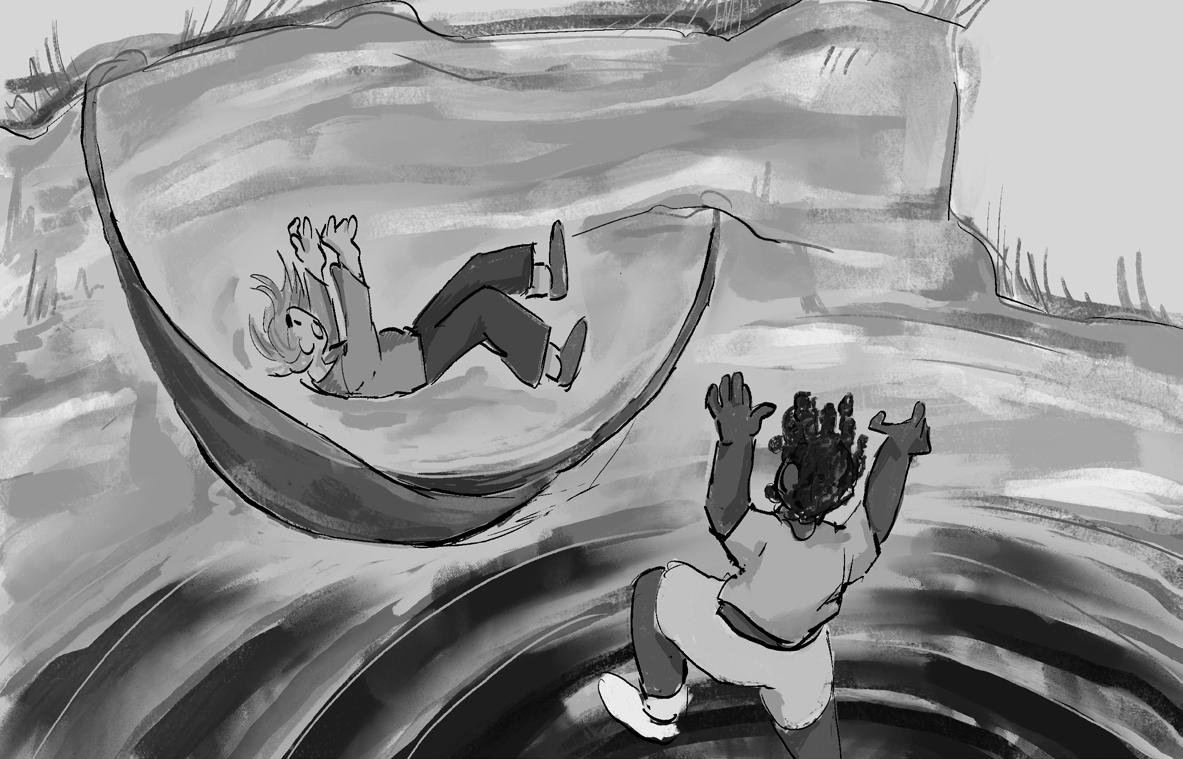
STATEMENT
The scale of good
obviously impactful for those select residents dealing with the issue, but was this really doing anything in the context of systemic neglect of those living in less affluent areas?
I know it’s a backwards way to think, but it’s been mostly unconscious. For example, when I see a GoFundMe or a request to donate, I often think twice about it. Is this the best way to use the very little money I have for donating? Which cause will reach the most amount of people? Is the $10 I can spare even enough? Is it even worth it if I’m not making some significant impact? Maybe I should just save my $10 for a different cause.
As my finger hovers over the link to donate, my thoughts always seem to fall into this vicious pattern. Sometimes, I swallow my doubts and donate what I can, especially if I feel particularly passionate about the cause. A lot of the time, though, I click out, giving up because it doesn’t feel like a big enough gesture toward good.
I’ve thought a lot about the times I feel like I’ve truly made an impact somewhere — one that lasts longer than immediate gratification. Randomly, the feminist club I started in high school is the first thing that always comes to mind. Two years after I graduated, a girl stopped me in my hometown grocery store to tell me she recognized me as the founder of the club and that she was now president. Five years after I graduated, the club is going much stronger than it was when I was leading it. Seeing their posts on Instagram fills me with a weird feeling — a club that I started on a whim during quarantine is somehow still carving a path at my high school.
I say this to emphasize that, maybe impact is an impossible thing to quantify. Maybe it’s an impossible being to trap, contain, measure and judge. I wonder if I’m
Rank, rinse and repeat:
by publications ranging from The Washington Post to Buzzfeed, ranking everything from “The Chainsmokers’ Top 10 Songs to Walk Your Dog To” to “Popular Attractions in Ann Arbor.” No media, place or person is safe from the trembling fingers of the masses, anxious to simplify the tremendous amounts of information that overwhelm us. The Top 10 List removes the need for critical thinking by assigning value, and promises to not waste our evershrinking time.
As a so-called free thinker, I would like to stand in proud opposition to anything that homogenizes our experiences. As a type-B derelict, I am often too quick to trust in the time-saving capabilities and amorphous authority of the Top 10 List. As I’ve said, my trip would not have gotten off the ground without my constant googling — “best hikes in New Hampshire” or “best coffee near me.” More often than not, I followed the recommendations to the letter.
Now, just to clarify what I mean by the phrase Top 10 List: I am throwing a wide net to refer to the general phenomena of written, published rankings. The Top 10 List can include the Top 13 List or the Top 500 List — any set of “things” sorted by loosely qualified authorities based on subjective

only doing myself a disservice by trying to attain the highest amount of it.
Part of this revelation came about through my unlikely friendship with Jeff, one of the custodians in the Michigan Union. During my sophomore year of college, Jeff, with his usual friendly disposition, came up to me to tell me that there was another student who looked exactly like me. I laughed at the idea of me having a clone at the school and thought I’d never see him again.
Throughout the last two years, however, Jeff has always made sure to say hi to me when I find myself in the basement of the Union (which is quite often, considering that I work there). He always makes sure to ask me how my day is going, and I’ve noticed our conversations distinctly shifting as I got older. In my second year, I’d complain about a water bottle I couldn’t bring myself to wash or homework I refused to do on time. More recently, I’ve found myself
sharing more positive reflections of my week, telling him about my consistency at the gym or even finding myself at peace with the uncertainty of the future. It’s a small comfort, knowing I have a friend in the Union, one who will always be there to show some interest in my life, but it has made a sincere impact on my time in college. Some of my days were harder than others, plagued with loneliness or anxiety or melancholy, and, oftentimes, life is made a lot better with these conversations.
These experiences have forced me to reconcile with the idea of doing “good” in the world. By being a friendly face around campus, even if it was just for a few students, Jeff was, perhaps unintentionally, reproducing the kind of good I hope to impart one day. Maybe making just a few people’s lives even marginally better is enough. Maybe it’s all most of us can ever hope for, because even people like Obama, who went on to be the president of the United States and by many
Dissecting the Top 10 List

criteria. Sociologists differentiate The Top 10 List from other ranking systems (such as the five-star scale) because it is a zero-sum game — the superiority of one item inherently indicates the inferiority of another. This competitiveness creates a stronger aura of objectivity than the more obvious subjectivity of something like a Google Review. Perhaps as Americans, we put even more unwarranted trust in the illusory fairness of the Top 10 List because we are raised on the myth of meritocracy. In essence, we are born into a collective dream that tells us we have bootstraps to pull ourselves up by, that success only comes when it’s earned — a belief on which the

edifice of the Top 10 List appears to be built.
In this way, ranking becomes something very serious. We don’t just use Top 10 Lists to plan trips to New England. We rank global economies, colleges and political candidates. But while these rankings may appear to be more objective than, say, Top 7 Restaurants in Bar Harbor, they often carry their own inevitable biases.
On our home turf, just this month, the University of Michigan was bumped from No. 21 to No. 20 in U.S News & World Report’s 2026 Best National Universities Ranking, and thus we rejoiced (despite being tied with three other schools). And by God, we should celebrate! Our minuscule extra point on the ranking has given us privilege. We have ascended the hierarchy of perception and now have greater access to jobs and funding. Studies show that we prefer ranked numbers that end in zero — the largest gap in positive perception on a ranked list comes between No. 10 and No. 11.
The ring of “T20” has brought us one step closer to winning the zerosum game.
So, now is the part where I diagnose ranking as a symptom of greater social ails — mob mentality, productivity culture, our socialmedia-induced short attention spans and the like. Except, this doesn’t feel quite right. Because, as I have confessed, I love a Top 10 List. In the dreaded information age, it’s impossible to not feel waterboarded by content, opportunity and just things. Is it so bad to sort it all out?
As an armchair journalist, my own inclination to write a Top 10
standards, made a large impact on a large number of people, started with a small group of struggling residents of Chicago. That idea is certainly comforting and has mobilized me far more than my “all or nothing” perspective did. I started volunteering at Ann Arbor Public Schools, and even though it is only three students and only three hours of my time per week, when the shy fourth-grader I’ve been spending time with offered to show me her drawings unprompted, I was ecstatic about the small step we were taking towards a real relationship because of the possibility of making a real impact on her learning. Although small, I’m learning to be happy with the changes that are made up of everyday choices instead of fatiguing myself trying to be the ultimate force for good. Because even the best people, I think, are just making small decisions every day that end up making the largest impact on the people around them.

article is in its potential for mass
consumption. For instance, just last year I co-wrote a “ranking” article about Disney live-action movie musical adaptations — which, saying it aloud, feels like the ultimate parody of a hyperspecific WatchMojo-esque ranking. I remember thinking, greedily, that it was going to be my most-read piece, because the title had the word “ranked” in it.
Now that I’ve confessed to being a “ranker” myself, I believe that to truly evaluate the Top 10 List as a phenomenon, we need to understand why we rank on an individual level. So, first, a scene from my ill-planned New England road trip.
My friends and I are cruising a byway in rural Vermont. The mountains look like paper cutouts in the distance. My window is down despite the chill, and brittle red leaves keep flying onto the wheel. It’s hour 10, Spotify is offline and we’re all bored, so we’ve lapsed into lazy arguments. We debate about which mountain tourist town is better (Jackson Hole or Bozeman), and then move to Percy Jackson characters, to books of the Old Testament, to delirious ad infinitum; drinking from the never-ending well of personal preference.
“What is your favorite...?” has been a staple in my conversational handbook since my socially anxious youth. It’s personal without probing and provides doorknobs for followups of agreement, playful argument or anything in between. It plays on the natural human passion for categorization in the very same way the Top 10 List does.
Of course, the Top 10 List is not the only way to sort things out. In John Green’s collection of essays “The Anthropocene Reviewed,” he waxes poetic about the futility of the five-star scale and the phenomenon of review culture — think Yelp or Google Review. He argues that the five-star scale was not designed for humans, but rather for data aggregation systems, hence its growth of popularity in the internet era. The Top 10 List could be lumped into this observation, but there is something about ranking that feels undeniably human and almost intuitive. My friends and I don’t assign stars to our favorite things when bored; we contextualize them in order to suss out their value. Perhaps the best example of the humanness of ranking is David Letterman. For nearly 40 years, Letterman had a segment on his late-night show in which he read off imaginary Top 10 Lists. From the “Top 10 Courses Taken by Texas A&M University Football Players” to “Top 10 Words that Almost Rhyme With ‘Peas,’” the joke wasn’t only the absurdity of the lists, but that the items — and their order — somehow made sense, all delivered in Letterman’s unflinching voice of authority. The universal humor of Letterman’s lists points to how naturally ranking fits into our lives. Even when the items are absurd, we can’t help but look for an internal logic. We acknowledge their lack of authority, but cannot deny that they just make sense.

Michigan in Color is The Michigan Daily’s section by and for People of Color.
In this space, we invite our contributors to be vulnerable and authentic about our experiences and the important issues in our world today.
Our work represents our identities in a way that is both unapologetic and creative. We are a community that reclaims our stories on our own terms.
Crying in Kim Nhung
“Chào cô, con có th ể giúp cô tìm gì không?” the young sales clerk asked, glancing at my mother.
“Không con, cám ơ n,” my mother responded, halflistening, her attention focused mainly on tapping watermelons in her hunt for the perfect one. After receiving a satisfactory response from my mother, the attendant then turned her attention to me, this time asking,
“Hi, can I help you find anything?”
The switch between Vietnamese and English was seamless, as if she had encountered this situation many times. Although I understood her perfectly fine when she asked the same question in Vietnamese, I answered with a polite, “No, thank you,” and continued browsing the aisles. This question, though completely innocent and unassuming, filled me with inexplicable despair.
Immigrating to America was the greatest sacrifice my parents ever made for me, uprooting their whole lives so that I could have one better than theirs, and while I am incredibly grateful, these feelings coexisted with fear–fear that I would soon forget the traditions that make me Vietnamese.
Despite being born and raised in Vietnam until I was six, and my native language being Vietnamese, the attendant must’ve noticed some inherent difference between my mother and me, something that gave her
the impression that I wouldn’t understand her question the first time around. Similarly, when I visited my homeland after nearly a decade, broken English and the term “Vi ệ t Ki ề u” immediately followed friendly hellos, and they often happened without me uttering a word.
Have I become so assimilated that even my own people don’t recognize me anymore?
When I first immigrated to America, I knew two words in English: “yes” and “no”. I was the only Asian student in my class; the only person of Color. When someone tripped me at lunch on my second day, and while chocolate milk continued to soak my pale pink shirt, my teacher asked if I had thrown my lunch on myself. Because I couldn’t understand what she asked, I took a gamble and answered, “Yes.” I had to flip my behavior card that day, and although I couldn’t understand why at the time, it was the first time I ever felt different. I let my peers pull their eyes back to imitate mine, wrinkle their noses at the food my parents spent late nights cooking after twelve hours of work, and laugh along when they muttered “konnichiwa” towards me, all for the sake of assimilation to an environment that never welcomed me in the first place. I have since embraced and defended my culture, wearing my differences with pride, but one feeling persisted: I didn’t know where I belonged; I was stuck somewhere in the chasm between the Vietnamese and American parts of myself and struggling to bridge the two halves.
The assumption that our parents and family will always be around to show us different parts of our culture is one that immigrant children often make, usually without realizing that the clock is always ticking. Every time I visit home, my parents’ hair is grayer than I remember, their wrinkles more prominent, signs of aging reflecting off their tired eyes.
On one occasion, I watched as they prepared the altar to honor our ancestors, lining the perimeter with bowls of rice, th ị t ba ch ỉ , canh khoai môn, s ườ n ram m ặ n, cá chiên, ch ả l ụ a and g ỏ i. The smell of incense permeated throughout the room as everyone took turns bowing to greet the family. It was my grandma’s death anniversary, one year in the lunar calendar since she passed.
This yearly ceremony is our form of remembrance, not only to mourn but also to celebrate the lives of those who have passed. We ate, we prayed and we chatted, reminiscing on how much we annoyed our grandma when we were younger, nagging her to make our favorite chè. The tradition is as ingrained in my culture as the hairs on my head, but as the years went on, these tethers started to snap. My Vietnamese sat dormant in my brain, practiced only at home, and the bún, bánh and mì recipes my mom taught me remained unfulfilled, as I was too busy to cook because I was pursuing the education my parents worked so hard for me to have.
CONTINUED AT MICHIGANDAILY.COM

My mother told me that as a child, if I were ever lost, all she would need to do was look toward the nearest field. There I’d be, lying on the grass, counting flower petals. My mesmerization of the natural world, how to be a good sister and why my mom loved yellow took priority. I didn’t contemplate the implications of my cultural identity — I wasn’t conscious of it.
That is, until one day I was lying in my elementary school’s garden, and a shadow hovered over my hand-picked daisy.
“Aren’t these flowers pretty? My dad calls me golam. His pretty flower.”
“You are really pretty,” the boy responded. “Well, except for your nose.”
I looked at him, confused and speechless. He stared back with a complete, almost innocent neutrality. It was a sincere remark that he stated as if it were an indisputable fact. My nine-year-old self walked home, carrying my bag, the flowers and his insult.
Compelled to understand him, I slowly unwrapped his words. Staring in my bathroom mirror, I studied myself. I waited for the tears, clenched fists
or complaints, but they never came. I wasn’t upset, just wildly curious. To me, the bridge of my nose didn’t feel significant; yet, others seemed to notice it before I ever did. Their perception unsettled me, as if they knew something about me that I had not yet discovered myself.
That first comment about my nose might have been easy to dismiss, but it was the first of many. From childhood to adulthood, I encountered people making the same casual observations, and noticed a pattern. Every comment, whether an insult, compliment or neutral remark, carried the same message: placing my nose as the focal point, and my mind, heart and passions secondary.
Even in an attempt to comfort or compliment me, I couldn’t escape my nose. My beauty was constantly filtered through proximity to whiteness, with my nose being at the center of the debate. I was either beautiful “because of” or “despite of” my nose. My appearance was hardly discussed without my nose as the contingency, and which side I fell on was dependent on how closely the speaker’s idea of beauty aligned with eurocentric standards.
The ongoing debate subjugated me as a passive witness, and the more people mentioned it, the more I felt like
Embarrassment needs a rebrand
I passed by him yesterday. The Diag is absolutely terrible when you are trying to avoid someone, and of course, I happened to pass him by the Chemistry Building, home to all premed warriors seemingly devoid of emotional attachment. Immediately, my mind races to remind me of all the times I put in more effort than he did. How desperate I must have seemed. The elaborate stories or jokes I narrated that did not seem to
land. I found myself tugging at the bottom of my sweater, suddenly very self-conscious of my low-rise jeans and the hip dips they carried. Sure, I was not really trying because it was a Monday and also because the likelihood of running into him has always been low. I began to rapidly run through a list of emotions in my head, trying to categorize what I was feeling. The only one I could land on was embarrassment. When I think of times I was embarrassed, I only recall moments where things never worked out for me. Like the first situationship that has indefinitely
shaped my impression of love or when I opened that email from a club, fully expecting an acceptance letter, only for it to be an “apply next time!” I associate embarrassment with rejection, and at the same time, yearning. I wanted these situations to work out in my favor because I had a strong intuition that they would make me better. Academically or romantically, if I actually got what I wanted, I would walk away with a sense of fulfillment. I know that I am deeply committed to improving myself, and knowing that I did not get the chance to is embarrassing.
Embarrassment is an internalized, agonizing process for me. It toes the lines of shame, guilt and, worst of all, humiliation. For any interaction that leaves me questioning my worth, embarrassment becomes this “catch–all” emotion to avoid other feelings that are deeper, or those that carry a more negative connotation. Embarrassment is just the tip of the iceberg harboring the deep, emotional angst I cannot confront.
After I saw him outside the Chemistry Building, I had to

debrief with my roommate. It was a millisecond of an interaction, but of course, it had to be discussed. The conversation starts as usual with a gentle prompt. “How did that make you feel?”
I think I walked away more affected than he did. He seems fine, and here I am, still distraught.
I feel like every time I see him, I get anxious and I need to run away. As if not being around him would solve my problems.
It’s hard to admit that I got attached so quickly. That’s, like, the first thing they tell you not to do.
Slowly, I start to get conscious of the emotional turmoil I’m in. I begin to panic, and even if I want to expand on my statements, I cannot. This is not a moment of vulnerable reflection anymore. By confessing my true feelings, I have to face the extent of how undignified I felt, or how deeply disgraced I was. So instead I just say: I don’t know, I’m just embarrassed. Done. I turned my embarrassing blunder into a brief talking point, but did not reveal too much about myself to the point where my roommate might think I’m overwhelmed by my feelings. I breathe a sigh of relief, and my anxiety subsides. It feels like a win.
I cannot explain to you how embarrassment became this allconsuming, defining thread for me.
Maybe I just like the ring of the word or the lack of weight attached to it. As I start to dissect why I think this way, the only conclusion that I can reach is this: I am scared to tell people how I actually feel, and therefore, I would rather just say I am embarrassed.
an unreliable narrator to my own story. As a child I repeatedly thought, I don’t see anything wrong with my nose, but other people seem to. So, maybe they were right. If it’s always being brought up, it must be wrong. There must be something I’m incapable of seeing. Because I couldn’t understand, I began to mistrust my own eyes and follow the majority rule. This distrust followed me beyond my appearance, I began to doubt everything I knew about myself in fear I would once again learn it was somehow controversial. Being reduced to my nose — the nose of my ancestors — conditioned me to believe that the way my mother brought me into this world was immoral. I felt out of place in my own body, as if simply existing in my natural form, deviating from the somatic norm, was audacious.
Consequently, I felt compelled to question myself and conform to the definitions imposed upon me. The more eurocentric features and cosmetic procedures designed to adhere to them were upheld as the norm; the more unconventional ones were ridiculed. Just for existing without a rhinoplasty, I felt ostracized.
CONTINUED AT MICHIGANDAILY.COM
Think about it: When someone uses emotions like humiliation or shame to describe a situation, you think to yourself, damn. You express some degree of judgment. Embarrassment? If I corroborate the story to sound like a joke, carefully leaving out the parts where I was genuinely upset and sprinkle in some sarcastic remarks on how terrible it all went, you would think that I walked away unfazed. It is skillful storytelling that ends in a laugh. In reality, these moments remain engraved in my mind.
I did not experience an “ah-ha” realization from them. I’ve never fully moved on. That’s not only embarrassing. It’s disheartening, burdensome and draining. But I would never admit that. I know this seems confusing, and it’s important to clarify what constitutes “embarrassment.”
Most people think of embarrassment as a deep feeling of awkwardness because you failed to follow a social standard. It is a nuisance: We only feel embarrassed because society determines what is perfect and imperfect. I agree, this can be really annoying. For instance, before Raising Cane’s opened, I got caught in the caution tape at peak traffic, and no one bothered to help me until a girl passing by very carefully unraveled me. My clumsiness or lack of spatial awareness cannot be helped, but the embarrassment was inevitable when I noticed the looks I got and the weird smiles from bystanders. CONTINUED AT
FOOTBALL
SportsMonday: For
JONATHAN WUCHTER Managing Sports Editor
For his first five years with the Michigan football team, former coach Jim Harbaugh was widely regarded as a good coach with one fatal flaw — being incapable of beating the Wolverines’ rivals.
Through a season and a half, Michigan coach Sherrone Moore’s tenure is steering in the polar opposite direction. Moore’s first season was underwhelming for the majority of it. Two losses at this point in the current season is similarly uninspiring. But he hasn’t lost to Michigan State or Ohio State.
For now, that’s the feather in Moore’s cap. He might not have postseason trophies in the cabinet, but as the man at the head of the program, he’s won the important games, going back to beating Ohio State as interim coach in 2023 and through Saturday with a win over Michigan State.
now,
“Means everything,”
Moore said Saturday after the 21st-ranked Wolverines’ win over the Spartans. “We talked ad nauseam about how important this game was throughout the week. When we talked after the game against Washington, and then on Tuesday, we talked about the history of the rivalry, what it means to win this game for the state, for the city, the records. So it means everything for us to have won this game and have Paul back at home again.”
Right now, Moore has an incentive to make this game as big of a deal as possible. Michigan is far from being in a dire place, but there are glaring deficiencies in the state of the program — ones that he hopes the Paul Bunyan Trophy can partially overshadow.
Taking a look at Harbaugh’s first five seasons — after which there were calls from fans for him to be fired — his worst record was 8-5. Every other year, the Wolverines were a top-20 team
Sherrone Moore can hang his hat on beating his rivals
in the country. Those years also came after former coach Brady Hoke plummeted the program to a rock-bottom 5-7 record before Harbaugh took over.
Moore, on the contrary, took a program coming off a national championship and fell hard to an 8-5 record. Yet, Moore mostly created optimism by ending the season with a win over the Buckeyes.
Arguably, more optimism surrounded Michigan this past offseason than it did in many instances when Harbaugh was at the helm. Take 2018 for example.
The Wolverines won 10 straight games after losing the opener. They climbed all the way to No. 4 in the nation and were on the precipice of a College Football Playoff berth. Then, Harbaugh lost to Ohio State and it was Armageddon.
Even midway through 2021, when Harbaugh finally turned the program around, a midseason loss to the Spartans put a dark cloud over the program,
Michigan finds a way in the final minutes, secures a 2-1 victory over Northwestern
Against an opponent who has struggled in Big Ten play, the No. 13 Michigan men’s soccer team may have anticipated a comfortable win, but instead found itself playing catch up.
Stuck in a tense deadlock with Northwestern until the final minutes, the Wolverines (9-2-3 overall, 5-2-1 Big Ten) secured a last-minute penalty kick to clinch a 2-1 victory in the 87th minute over the Wildcats (6-5-3, 1-4-2).
Michigan’s determination for a win was evident from the first whistle, diligently controlling the field by dominating the possession game and using every play as an instrument to get into Northwestern’s half.
Despite the Wolverines’ discipline on the ball, it was the Wildcats who established themselves on the scoreboard first. In the 31st minute, Northwestern forward Aaron O’Reilly found an exposed pocket of space behind Michigan’s back line. He charged down the wing and delivered a bullet into the bottom left corner of the net.
The Wildcats’ experienced back line refused to yield in the first half, keeping a high line that made penetration into the attacking third challenging for the Wolverines. That structured defense rendered Michigan ineffective and empty handed going into halftime. The Wolverines’ knew a new approach was necessary in order to claw their way into the game.
“One, calm down.” Michigan coach Chaka Daley said. “(The team was) really flustered based on
FIELD HOCKEY
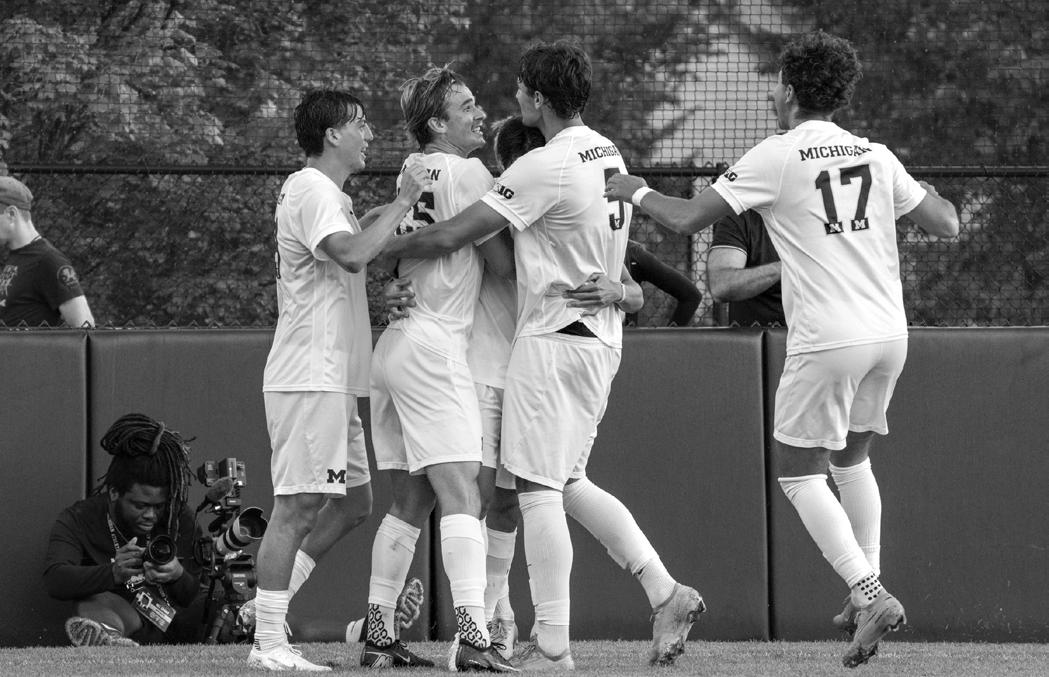
how we played, not the score. Two, we need to be more effective in the final third and cause more problems in the back line. Three, (we) made two tactical adjustments”. Michigan came back to the pitch with renewed energy and vigor, eager to equalize the score. Finding their rhythm, the Wolverines started to put together the chances they needed, doubling their corner kicks and tripling their shot attempts in the second half. Every near miss added to the urgency to equalize the score, until relief finally came in the 66th minute.
Subbed on in the 65th minute, Michigan junior forward Duilio Herrera had an instant impact.
Building from the back line, senior defender Nolan Miller found Herrera in the middle, whose first touch on the ball off the bench created a through ball over the top of Northwestern’s back line.
Wolverines junior forward Grayson Elmquist found the breakaway and showed off his composure in a one-on-one with the Wildcats’ goalkeeper, navigating around him with a perfect touch and finding the back of the net. In achieving his fifth goal of the season, Elmquist had equalized the game 1-1.
Ananya Kedia/DAILY
Northwestern was on the hunt for a way to pull back ahead, but Michigan junior goaltender Isaiah Goldson crushed any hope of retaliation. He denied the Wildcats again and again, staying composed even with time dwindling out and pressure rising.
With increased pressure came more aggressive playing styles, culminating in three yellow cards for Wolverines in the second half. But the intensity Michigan was displaying was rewarded again in the final moments of the game.
“The difference between the intensity in the first half collectively, attacking and defending, and intensity in the second half is night and day.” Daley said.
With less than four minutes left, a Wolverines corner kick led to a foul in the box against Northwestern.
After some deliberation, the penalty was awarded and graduate midfielder Mitar Mitrovic stepped up to the penalty spot.
The whistle blew, the goalie dove left and Mitrovic smashed his shot into the right corner, pulling Michigan ahead 2-1 in the 87th minute.
CONTINUED AT MICHIGANDAILY.COM
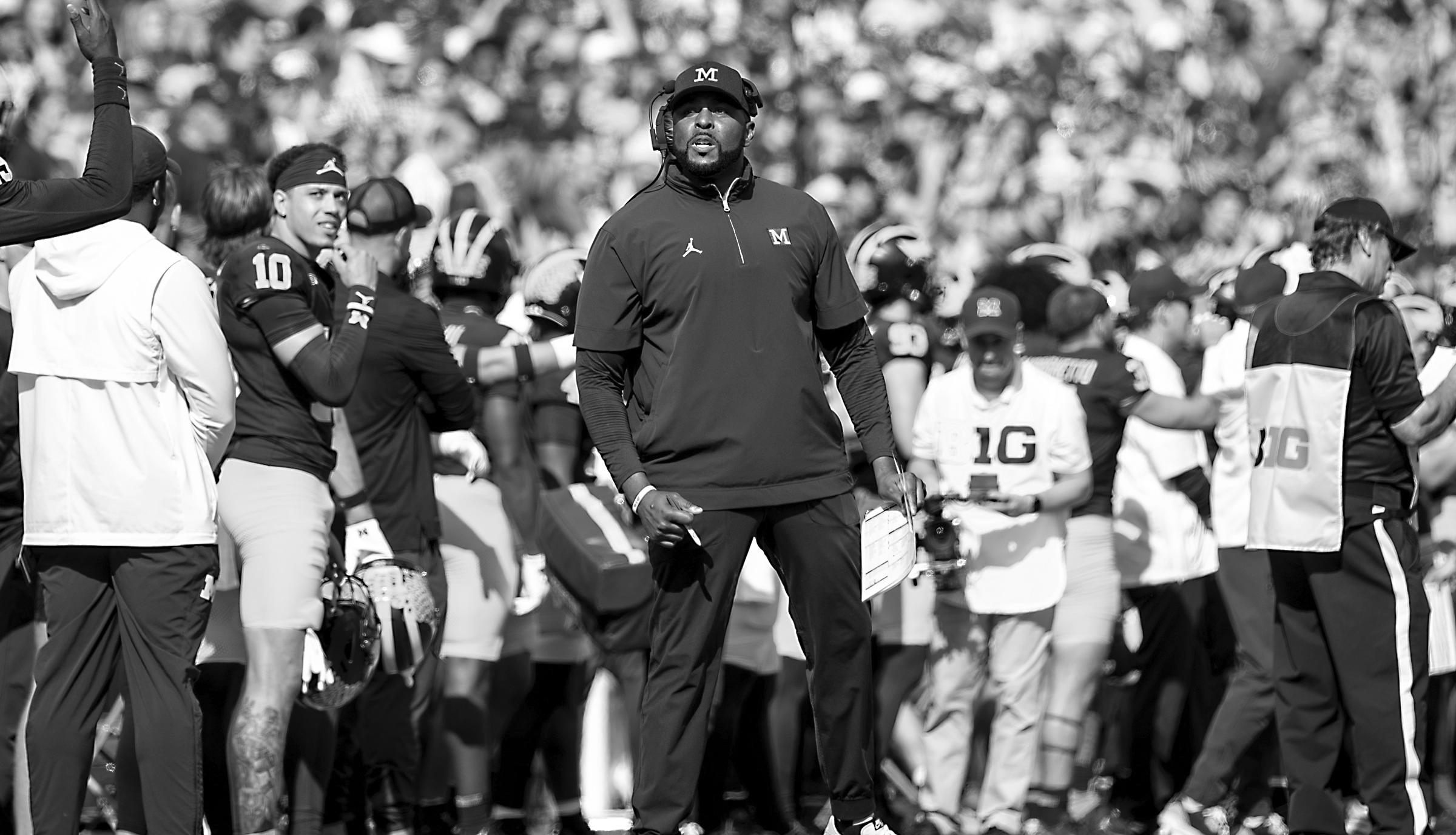
Michigan’s losing streak against Michigan State grew to two games while the streak against the Buckeyes remained at eight. “During training camp, we talk about our rivalries, we talk about every game, we talk about all the big games,” Moore said Oct. 20. “We’ll definitely re-educate them on what this means. This means a lot. This means everything. We’ll talk about Paul Bunyan, what that means to us here in this facility in Ann Arbor and the University of Michigan, we’ll talk about the history of the rivalry, what it means and all the implications of what winning this game is about.”
CROSS COUNTRY
The implications of these wins can’t be understated. The Wolverines’ two rivalry games can move mountains to change the perception of the program. Moore and Harbaugh have experienced the opposite ends of it.
AT MICHIGANDAILY.COM
Michigan delivers personal bests and top 10 finishes at EMU Fall Classic
The Michigan women’s cross country team closed out its regular season on the same course it started. This time around, “everything clicked.”
On Friday, the Wolverines headed to Hudson Mills Metropark to take on No. 24 Michigan State and Eastern Michigan at the EMU Fall Classic. Though the team didn’t send enough runners to score, Michigan’s two attatched runners, sophomore Coraline Haggarty and senior Alyna Lewis, both placed in the top 10 of the 5-kilometer race and broke their personal records.
“We were able to prove what we were capable of,” Haggarty said.
Since the Michigan Open in Dexter two months ago, the Wolverines have been working hard to play to their strengths, overcome their weaknesses and solidify a plan to take on the course again. At this race, Haggarty focused on staying measured at the beginning, avoiding going out too fast and trusting that she could use her sprint background for a kick in the final kilometer. This paid off, as she accomplished an impressive 55-second course personal best while achieving a new personal record.
Lewis finished just seconds behind her, beating her previous time on the course by almost 28 seconds and setting her own personal record as well. Haggarty and Lewis both compete in middle-distance events in the indoor and outdoor track seasons, so they consistently
train and race together. This race was no different, with the two athletes sticking together for a long stretch. The pair worked together throughout, taking turns pushing and setting the pace while allowing the other to follow along.
“Our program really emphasizes that we draw strength from each other,” Haggarty said. “There are moments in a race where I rely on her more or when she might need to rely on me.”
Going into the race, the team set goals of winning their “runoffs,” which occur at the very end of each race. In these runoffs, the athletes zeroed in on a nearby runner from another team and worked to make sure they beat them in the final kick.
According to Michigan coach Mike McGuire, these run-offs are “all about willpower”. The person who wins is the one who was most willing to “dig into the discomfort” in the last push of the 5-kilometer.
While the Wolverines did not have the chance to compete for a collective win, Haggarty was proud that she and her teammates
were able to successfully pull off these individual races.
In addition to Haggarty and Lewis, three unattached Michigan runners competed in the EMU Fall Classic. Freshmen Emmry Ross and Keaton Robar also significantly improved their times between this race and the season opener, coming in fifth and sixth place, respectively, while achieving personal bests. Junior Brooke Johnston, another unattached runner, took the third place spot, also running a personal best. Johnston has been battling an injury for several months, and she ran her first race of the season just a few weeks ago. “It was just a a really strong reflection of the work she’s put in to get back on her feet”, Haggarty said. The race was the final test of regular season for the Wolverines’ runners, and many of them found themselves leading the pack. The stars came into alignment and the course conditions were ideal, allowing the athletes to put their months of hard work and preparation on display.

No. 13 Michigan restrained by No. 2 Northwestern in 3-1 loss
THEO ROGERS For The Daily
The No. 13 Michigan field hockey team has been a force within the Big Ten and nationwide, striking fear into oppositing defenses. Led by graduate forward Abby Tamer’s seven goals and two assists, the Wolverines have shown they’re one of the top teams in the nation. However, even the Olympian, Tamer, couldn’t lift them over No. 2 Northwestern.
“We played a good first quarter, and had a couple of good things here and there, and lost a little bit of confidence, but I think we finished strong.” Wolverines coach Kristi Gannon Fisher said.
“So that was a bright spot. And so now we just got to figure out how to complete 60 minutes.”
For the first 15 minutes, neither team gained control of the game. Both teams used their defensive press starting at the top of the opposing team’s circle, but neither built solid attacks to
The Wildcats (14-1 overall, 6-0 Big Ten) held Michigan’s (8-5, 3-3) potent offense to just two shots on cage throughout four quarters. With two goals in the third period and stifling defense throughout, Northwestern would go on to beat Michigan 3-1 at home and clinch the Big Ten Title.
reach the opposition circle and get a shot off on the cage. The most pertinent moment of the first quarter came during the Wildcats’ overturned penalty corner in the final moments. Michigan and Northwestern’s defenses did their job, as the uneventful first quarter ended 0-0. This disjointed game, however, was eventually taken by the Wildcats in the second half, despite the Wolverines capitalizing on a penalty corner in the first minute of the third quarter. The well-placed and powerful shot came from sophomore back Eva Bernardy, laid off by redshirt senior back
Emmy Tran. This cancelled out Northwestern’s penalty corner goal by midfielder Laura Salamanca in the second quarter, leveling the score at one.
“I think just getting shots on goal, not playing around with it as much in the circle,” graduate back Claire Taylor said when asked about Michigan’s necessary offensive improvements.
The Wolverines struggled to gain any offensive momentum for four quarters against the disciplined Wildcats. They had just two shots on the cage, one coming from their penalty corner goal early in the third quarter. Northwestern’s impressive defensive outing started at the
Wolverines’ circle. With high pressure on Michigan’s backs and midfielders, the Wolverines failed to bypass the Wildcats’ midfield and get their dangerous forwards into positions within Northwestern’s circle and get a shot off on net.
The Wildcats’ two quick goals following Michigan’s gametying goal assisted their strong defensive performance. After a deflected shot at the top of the circle from forward Ashley Sessa, Northwestern quickly regained their lead. Then it was added on to from a tap-in goal by forward Olivia Bent-Cole after a clever spin move in front of the Wolverines’ cage, going up 3-1.
Even in the rare moments when Michigan had the opportunity to counterattack with Tamer, the usually reliable Wolverines’ offense didn’t capitalize on these moments, as the organized Wildcats surrounded her and isolated Tamer. Northwestern, led by its defense, controlled the game and severely limited Michigan’s say in this Big Ten showdown. It’s no easy task to come off a bye week, much less against a team like the Wildcats. Keeping up the offensive and defensive intensity for 60 minutes against Northwestern was always going to be difficult. This time, it was the governing Wildcats’ defense that overpowered Michigan.
GAME 1 : MICH 4 | WMU 0, GAME 2 :WMU 5 | MICH 2
Michigan shuts out Western Michigan in defining performance
seat at the table, but that they wanted to be at the head.
Junior forward Jayden Perron took his first shift of the night in the first two minutes of the game. There was almost a full game still ahead for the No. 3 Michigan hockey team to prove itself against last year’s national champions, but Perron didn’t need it.
Perron needed one shot. A tight angle on the right side gave him just enough room to start the Wolverines’ command. And one goal later, Michigan sent an instant message to No. 2 Western Michigan that it wasn’t going to be backed into a corner.
The highly awaited and competitive matchup between these two teams wasted no time to provide entertainment for a roaring Yost Ice Arena. In a shutout performance, the Wolverines (7-0) preserved their win-streak while dominating the Broncos (4-2), 4-0.
“The defense,” Michigan coach Brandon Naurato said when asked about lessons from the game. “It’s not structure, it’s not tactics or game plan. It’s buying in, (having) hockey players, hard skill and wanting to play winning hockey for Michigan. So that’s what I am most proud of.”
Just seven seconds into Thursday night’s game, freshman goaltender Jack Ivankovic earned his first save as Western Michigan ripped the puck for one of its many trials for Ivankovic. But with that swift speed and tone set for the game ahead, the Wolverines didn’t need another notice to take charge. That first opportunity for Michigan was all Perron needed to make sure he turned a quick moment into a lasting one. Through the rest of the period, the Wolverines kept Western Michigan off the scoreboard and away from the crease. The Broncos struggled to find room in the slot as Michigan compacted in the net-front, forcing long-range shots. Though Western Michigan wasn’t afraid to take those types of shots, the defensive pressure and Ivankovic made it an uphill battle.
Rather than succumbing to the intimidation of the reigning national champions, the Wolverines were doing everything in their power to prove not only why they deserve a
“Guys aren’t really getting comfortable,” senior forward TJ Hughes said. “(They’re) showing up each day ready to work, ready to win and trying to get better.”
Michigan brought this mindset five minutes into the second period when its power-play units took advantage of double minor penalties giving a four minute window for opportunity. After a continuous line of shots from the Wolverines, sophomore forward Michael Hage snagged the puck on the left side of the net to make a pivot turn before putting the puck away.
With a two-goal cushion for Michigan, the Broncos struggled to locate any offensive cohesion. Through wide shots and missed passes, Western Michigan scrambled and found itself in the penalty box rather than the offensive zone. As the Broncos attempted to figure out their gameplan, the Wolverines continued to fire on all cylinders.
And when the third period started, Michigan’s force didn’t falter — it intensified. With the entirety of the Wolverines’ scheme operating at full force, its power play continued to reap the benefits of Western Michigan’s lack of response. Less than two minutes into the final period, freshman forward Adam Valentini sent a wrister off a deflection that dug the Broncos’ hole even deeper. And an empty-net goal in the final 15 seconds cemented Michigan’s victory.
“They’re a great team there,” Hughes said. “It was a two versus three team tonight. We have a great tradition, playing them each year and doing a home and home weekend. It gave us juice knowing they’re a great team. It’s gonna be a hard weekend and we did a great job tonight.”
The Wolverines entered the game knowing it needed to play its best brand of hockey to compete with the No. 2 team in the country.
Though Perron set the tone as soon as he could, the rest of Michigan’s lineup didn’t have to fall in line. Because the Wolverines knew if they wanted to be considered one of the best, they had to not only compete with the best, but beat them.

SPLITTIN’ MITTEN

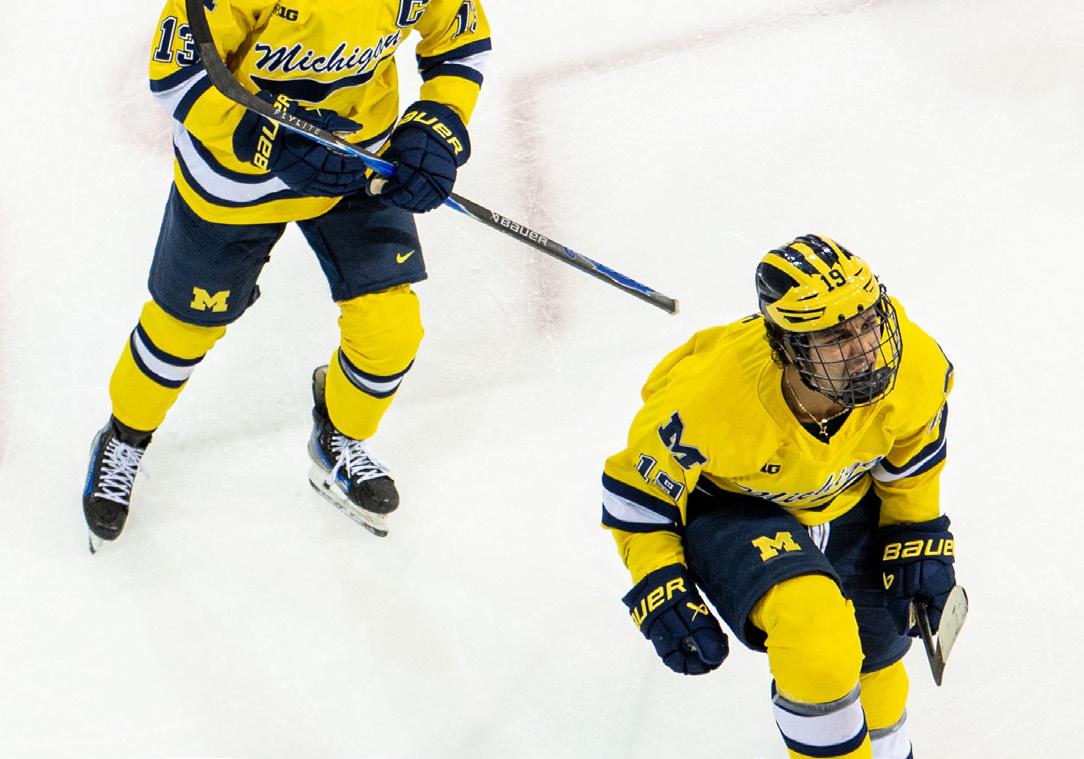
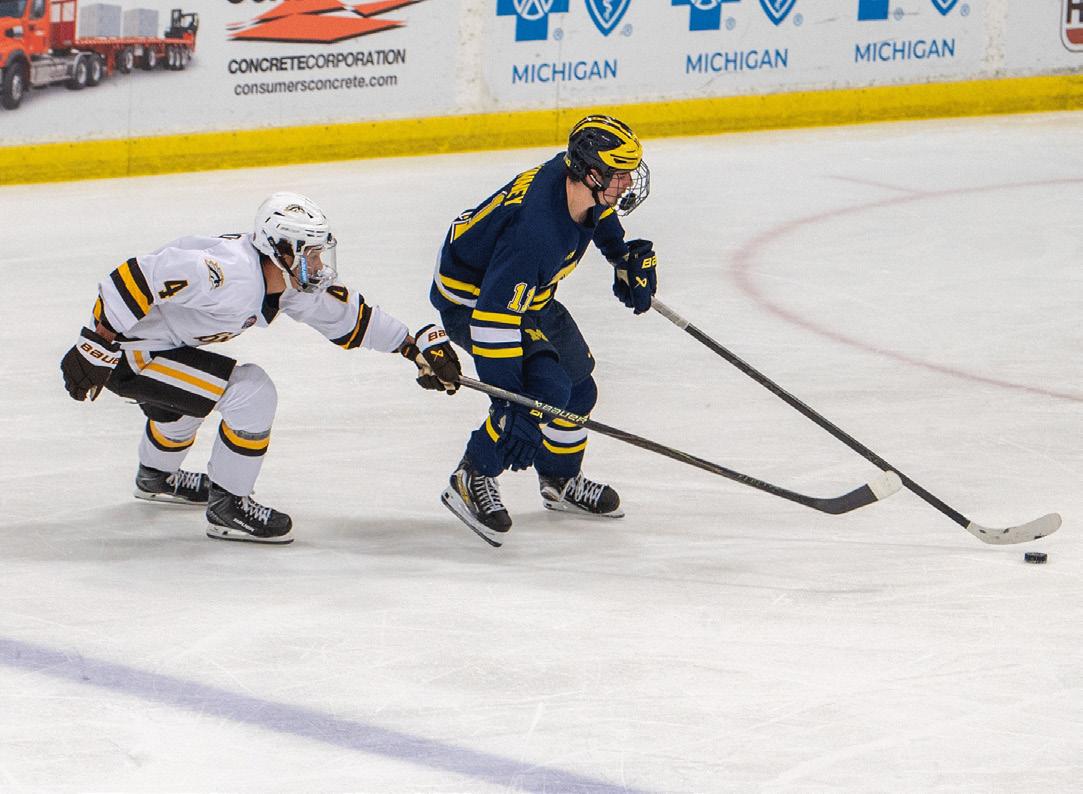
Michigan suffers first loss of the season, succumbs to Western Michigan
SOPHIE MATTHEWS Daily Sports Writer
KALAMAZOO — In one of college hockey’s toughest environments, it can be hard to remain level headed.
The No. 3 Michigan hockey team proved to be no exception, making the penalty box an extension of its bench and constantly fighting the odd-man disadvantage.
The Wolverines (7-1) suffered their first loss, 5-2, to No. 2 Western Michigan (5-2) after having little success in the attacking third. The high-pressure Broncos proved to be Michigan’s final boss, drawing countless penalties against the Wolverines and subsequently making it nearly impossible to gain any traction on the offensive press. Michigan was simply outmatched this time around.
“Similar to last night, it could’ve went either way at different times,” Michigan coach Brandon Naurato said. “It’s good hockey. It’s a good test for us to see where we’re at. You’re not gonna play in barns like this in the NCAA tournament. I think this is a really good test.” Michigan’s kryptonite was its magnetic pull toward drawing penalties. In an already chippy game, the Wolverines kept finding themselves down a man, then hindering their offensive opportunities. The Broncos rode the momentum gifted their way, and Michigan had to pay for it. The pressure never faltered, and a late second period goal for Western Michigan set the Wolverines back on the chopping block, trailing by a score of 2-1.
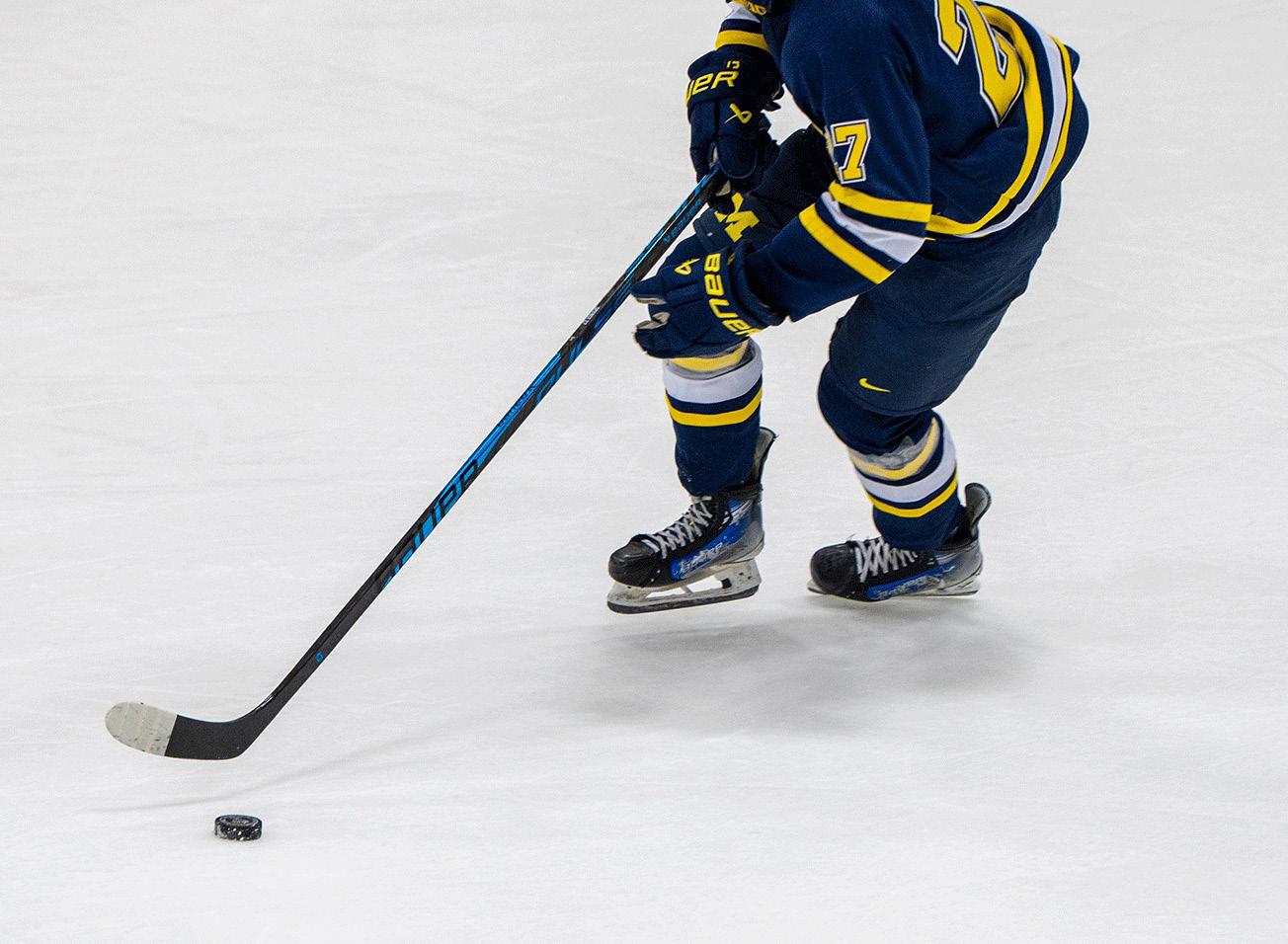


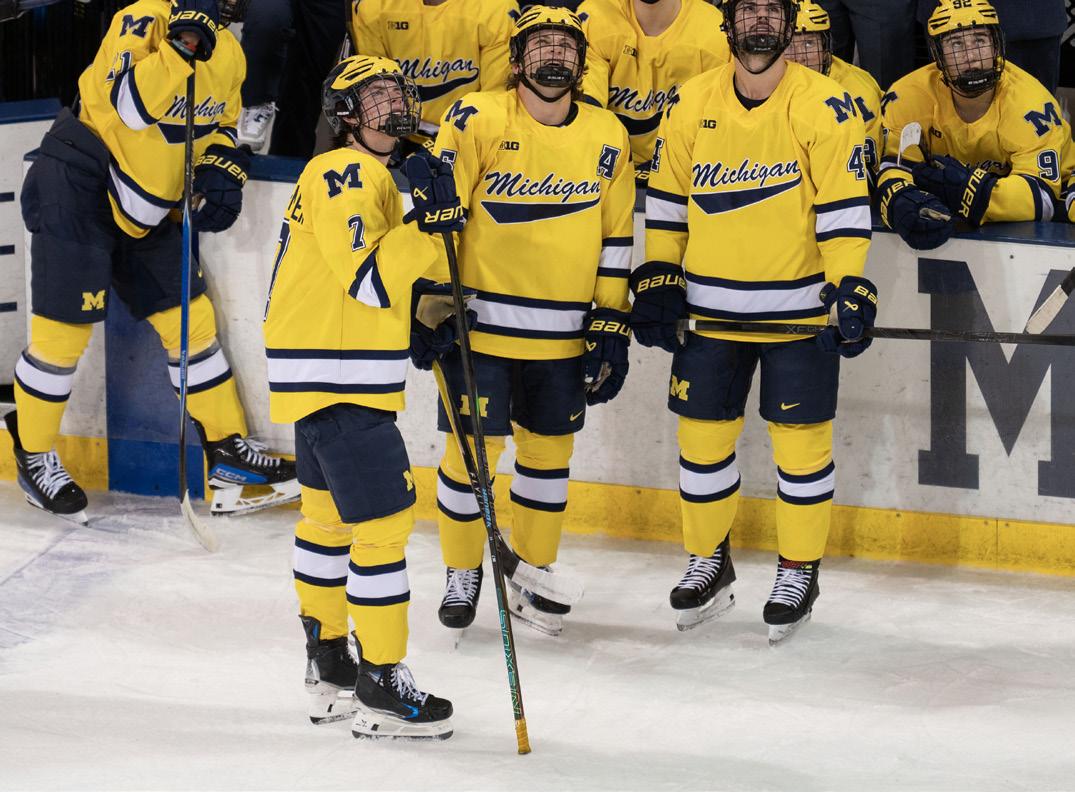
Quickly into the start of the game, Western Michigan applied heavy pressure on the Wolverines. Michigan didn’t find peace on the ice, as in each moment the Broncos treated the puck as their own, and they didn’t want to share. A variety of early penalties against the Wolverines only bolstered Western Michigan’s momentum, and it was the last blow the Broncos needed to finally defeat Michigan’s defense.
The seemingly invincible wall that has been freshman goaltender Jack Ivankovic proved his mortality, allowing a goal while on the penalty kill to give the Broncos a 1-0 lead.
For the first time this series, the Wolverines trailed the defending national champions, needing to find an offensive berth if a sweep was in their future.
In the 13th minute of the first period, Michigan found itself in a four-on-four situation. Capitalizing on the extra space, the Wolverines had the room to play around and find its footing. Entering the offensive zone, freshman defender Henry Mews tested a route up center ice. Loaded with pressure, he dropped the puck back to open sophomore defender Dakoda Rhéaume-Mullen. Understanding the gravity of the play, he exercised patience before ripping one top corner to set the total at one a piece.
Just like that, the game returned to an even score, allowing either team to steal the victory.
“It’s been a lot of special teams with both penalty kill and power play,” senior forward Josh Eernisse said. “And when that happens, it can disrupt the flow of the game a little bit. Some guys are maybe playing a lot in this short span and other guys are sitting around. … But there’s a line where we want to be hard, we want to be physical, we want to be aggressive. And sometimes penalties just come with that.”
Entering the third period, the fate of the game was in the hands of whoever found the back of the net first. The Wolverines needed a goal right away if there was to be a chance at remaining undefeated. However a minute in, Western Michigan piled onto its lead, leaving Michigan trailing by two. This moment was the final nail in the Wolverines’ coffin. They couldn’t take away the confidence the Broncos cemented into their play. After a series of disorganized and somewhat chaotic goals on both ends, the game’s score elevated to heights deemed out of hand, finishing with a final score of 5-2 to have Michigan conclude its sevengame win streak with a split series. The Wolverines’ young roster has ultimately encountered the bitter taste of a loss, evading the inevitable for seven games. While Michigan proved its ability to beat the national champions the night before, a lack of discipline in a tough environment impeded the Wolverines’ hopes at a productive offense.




